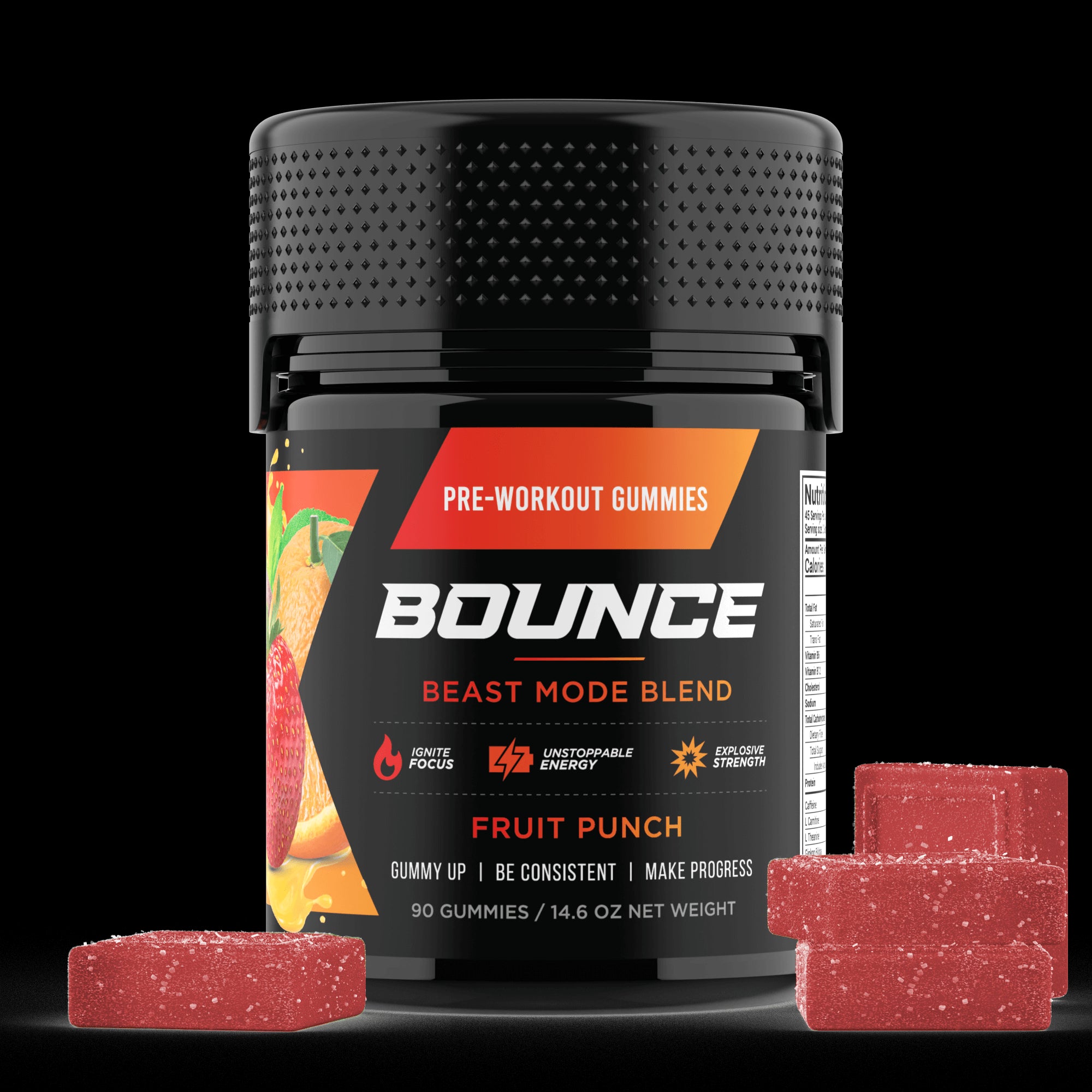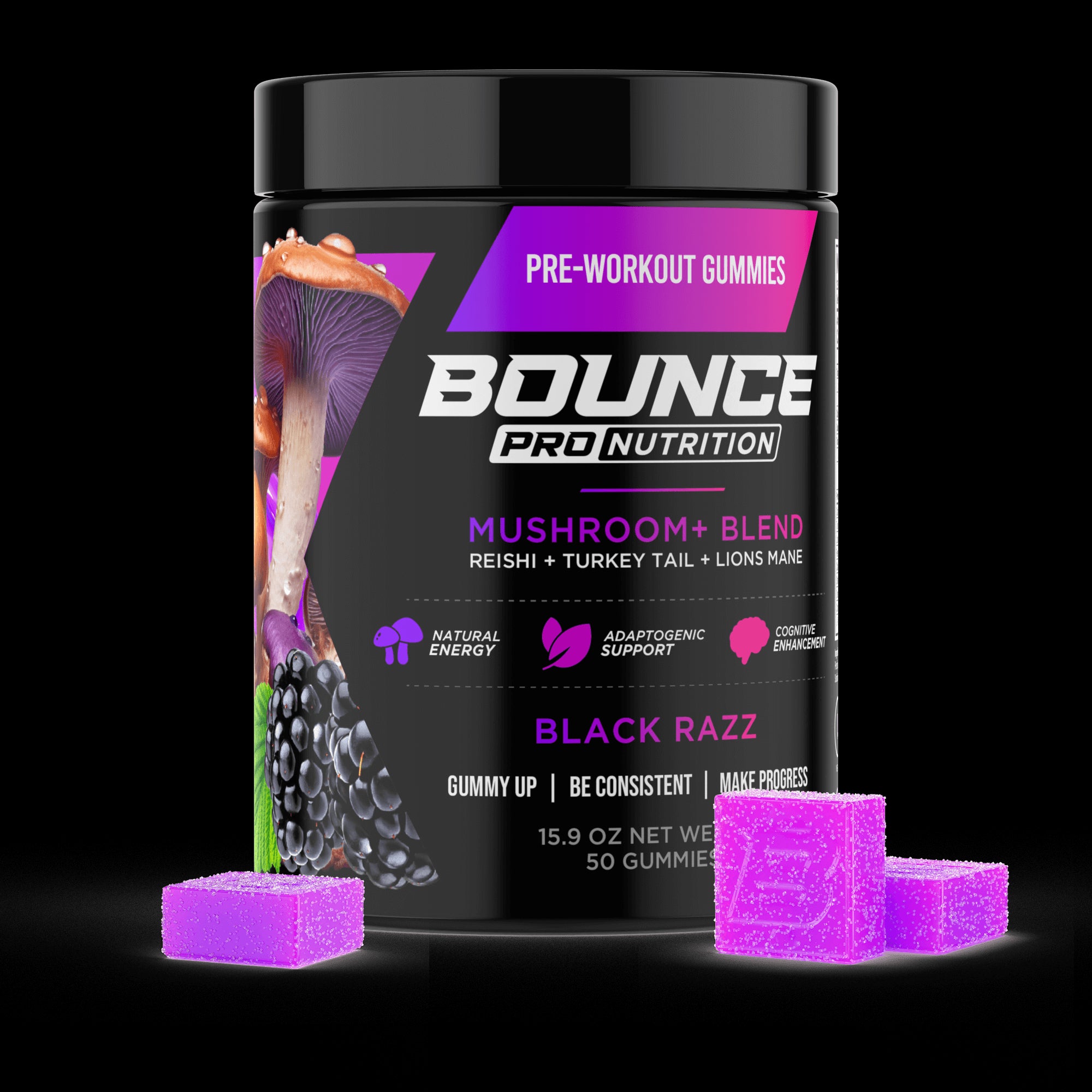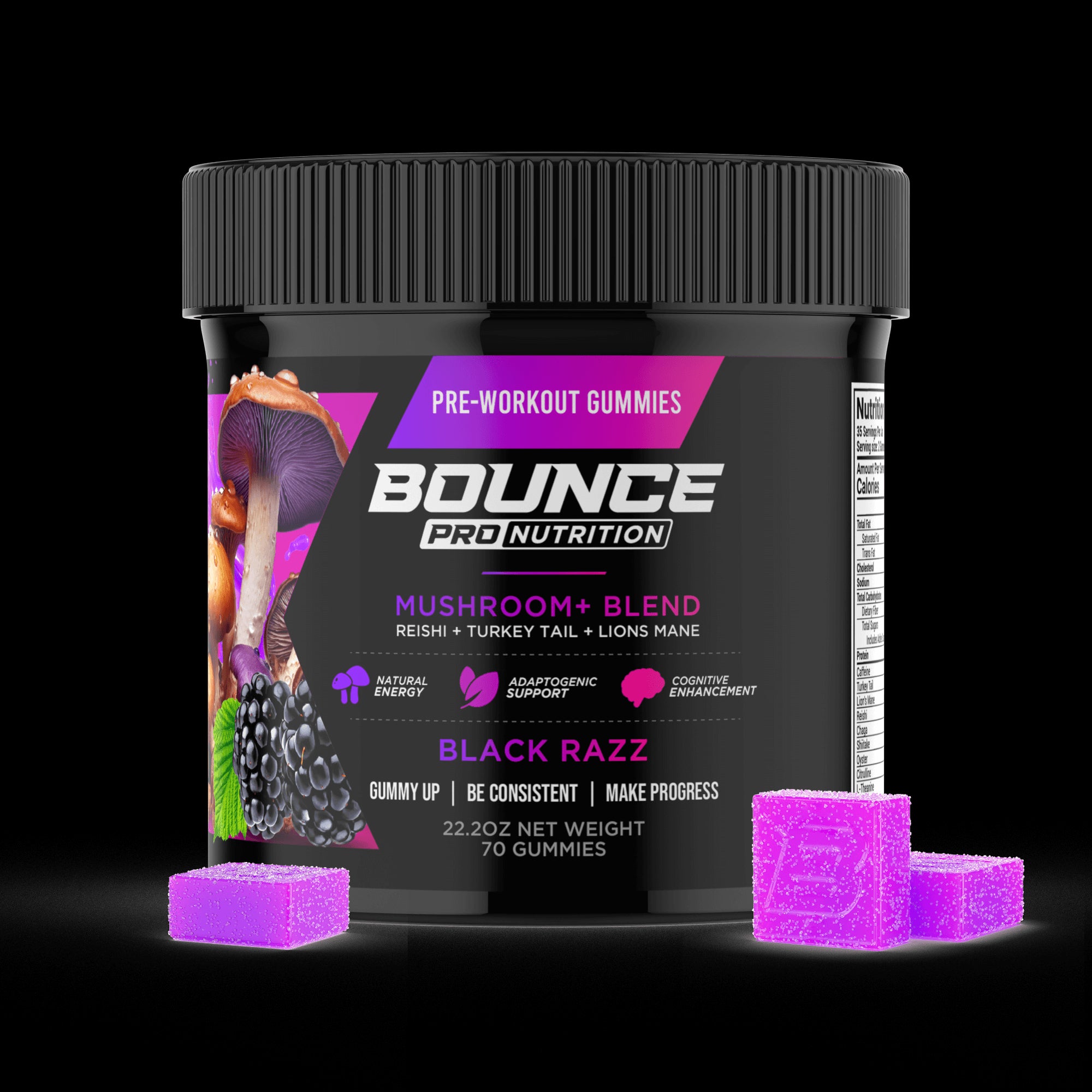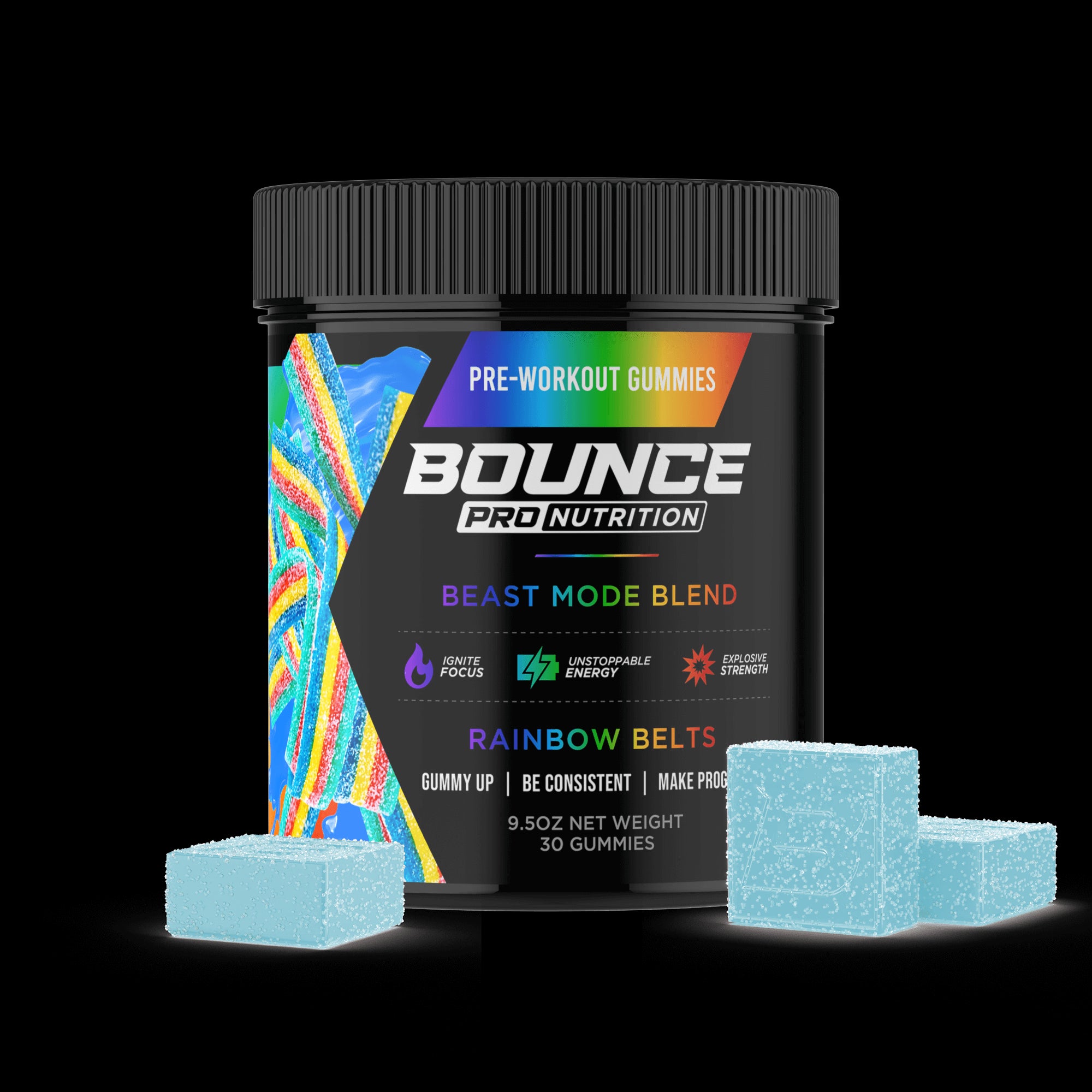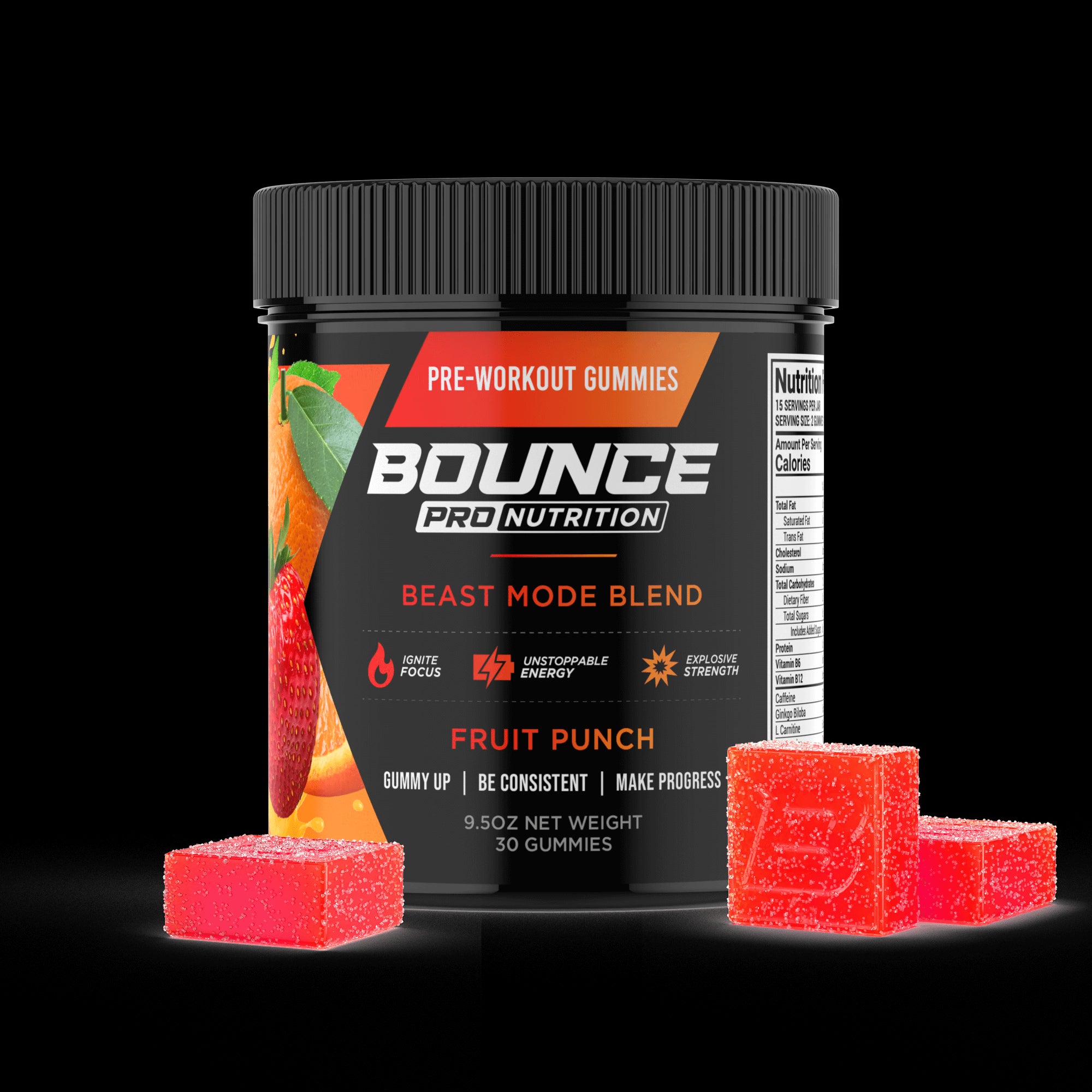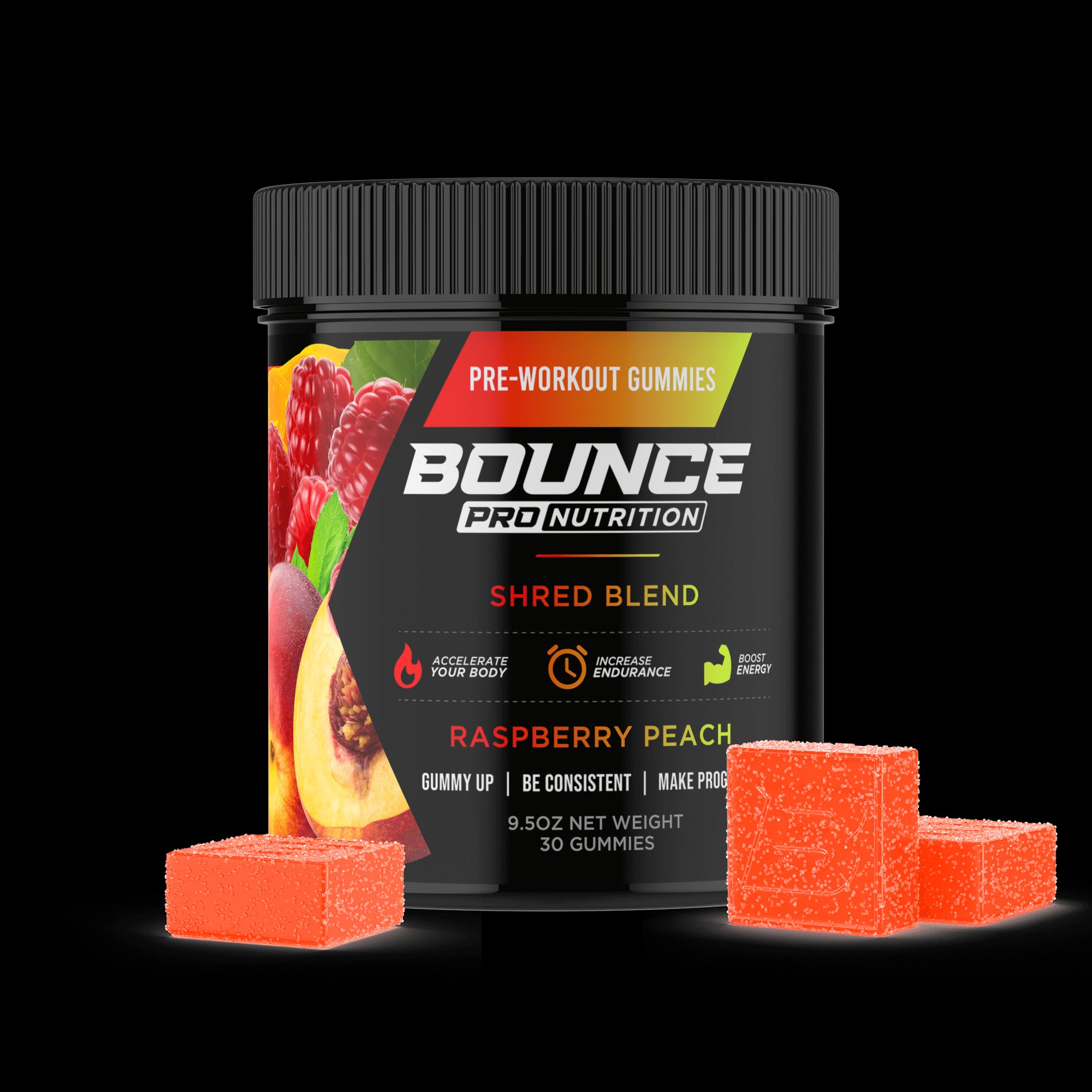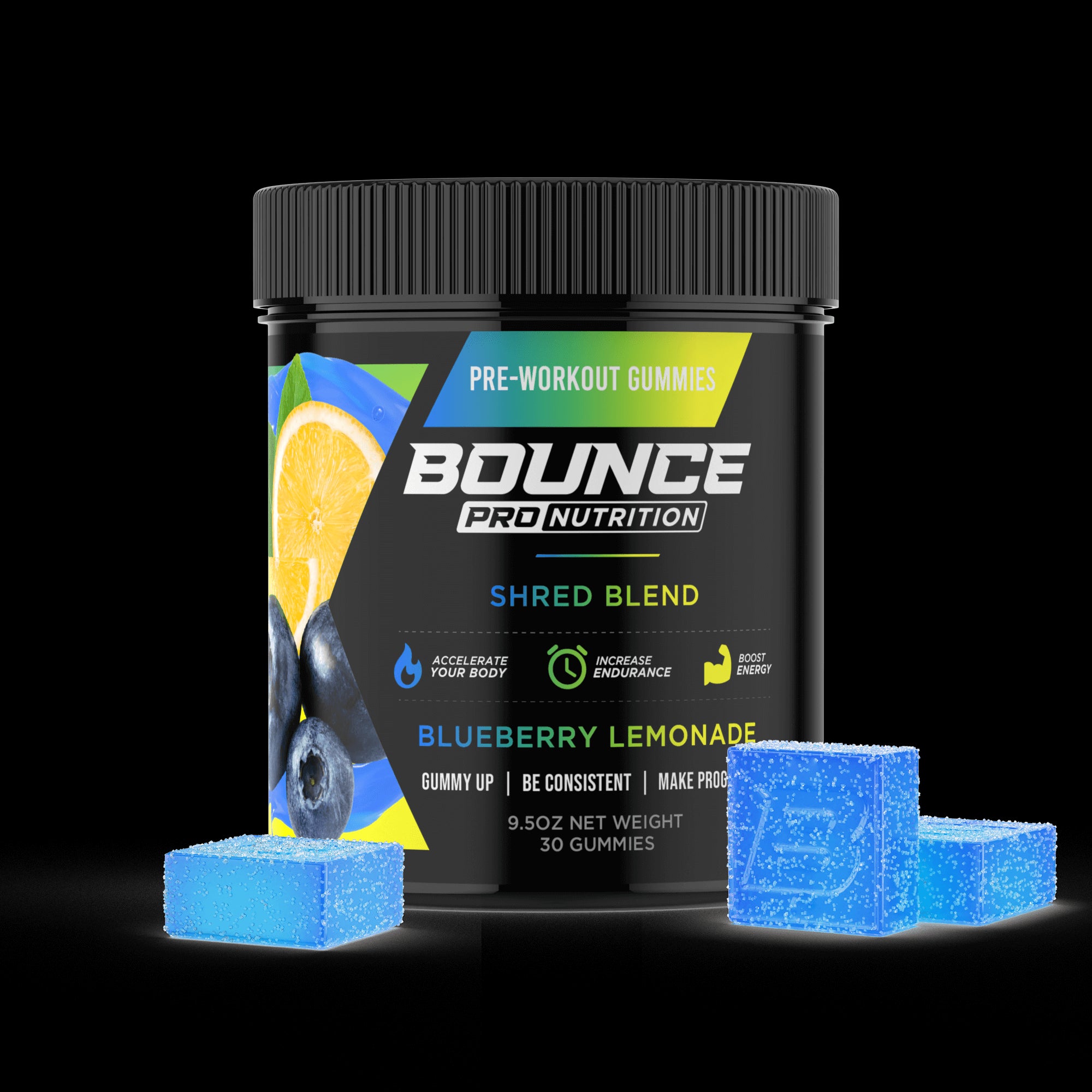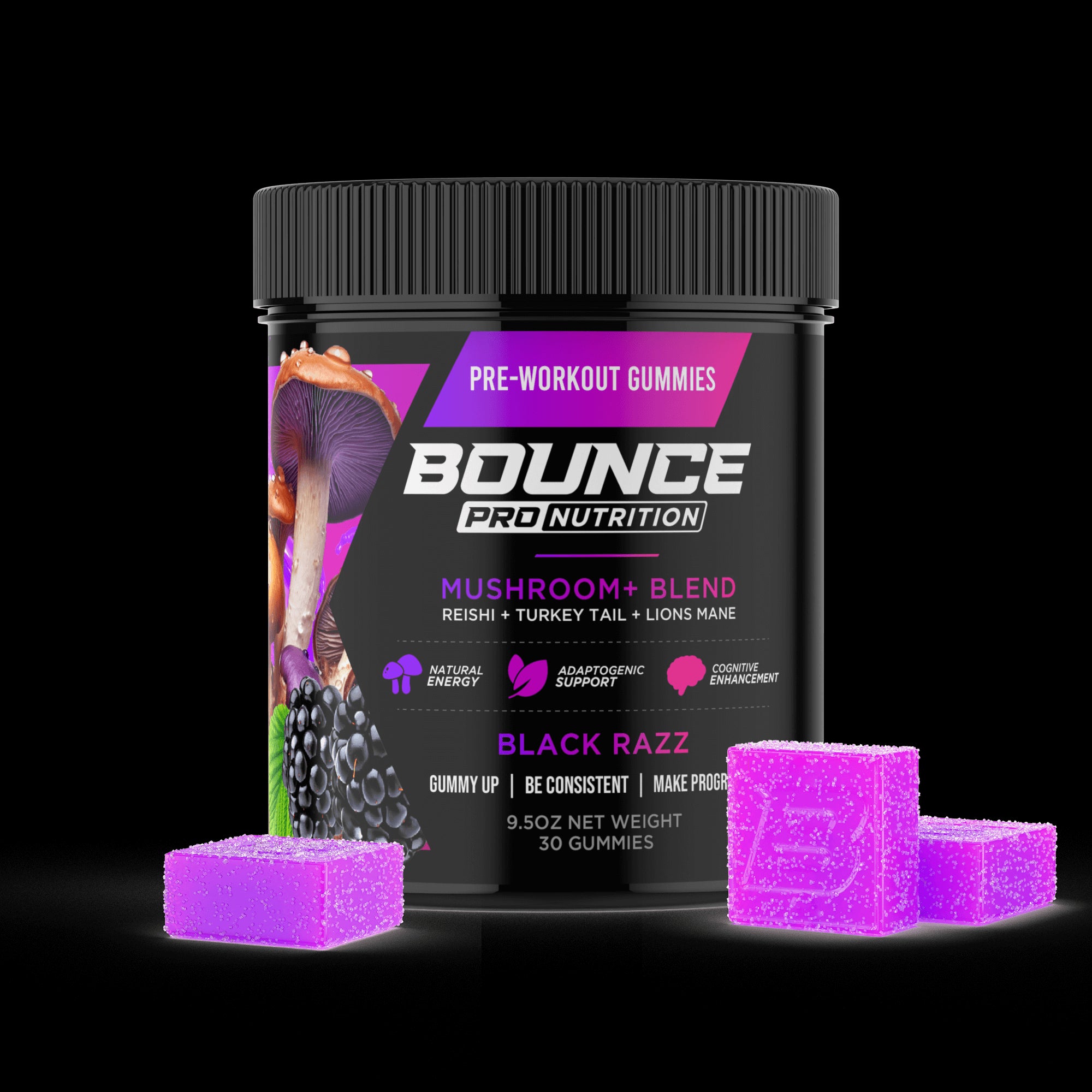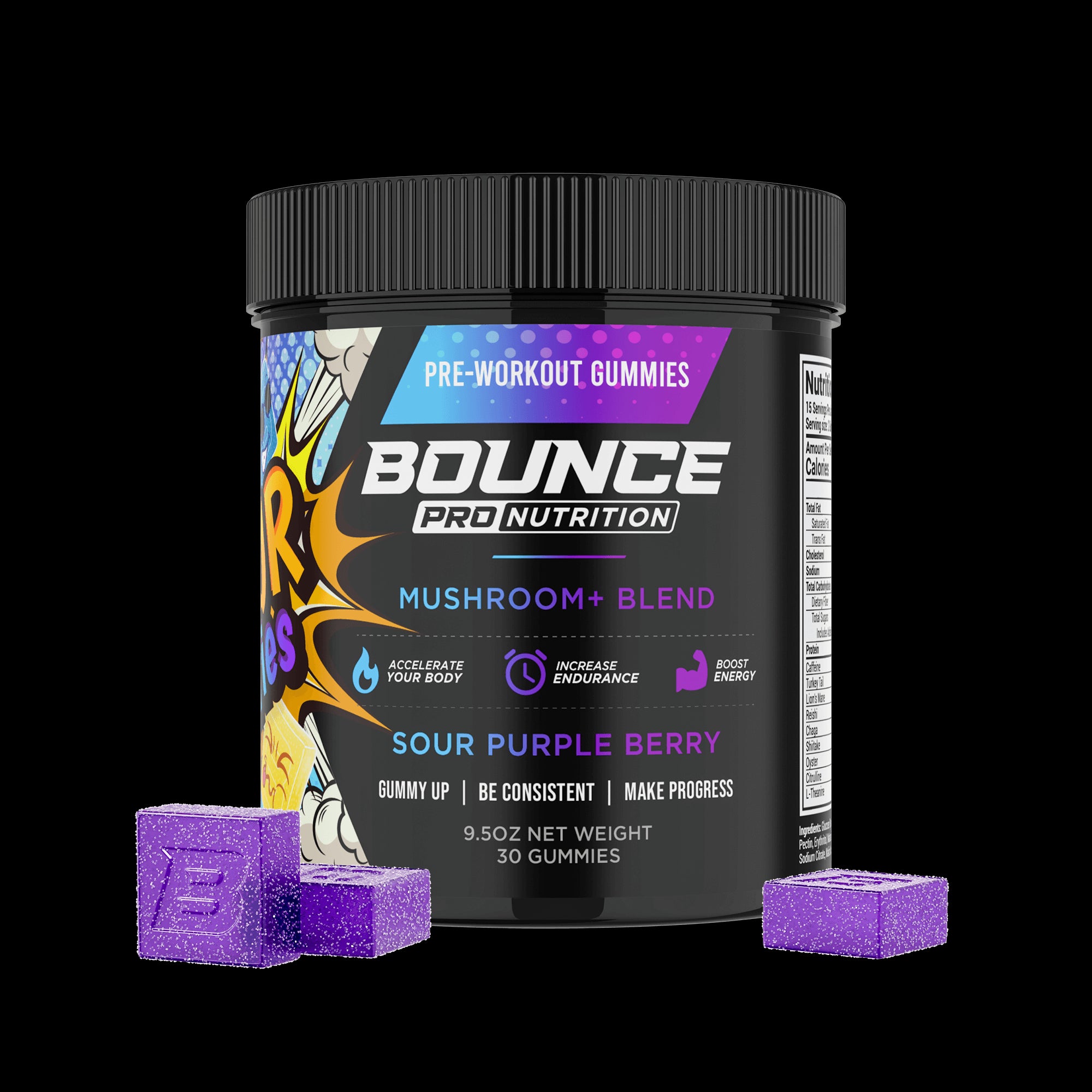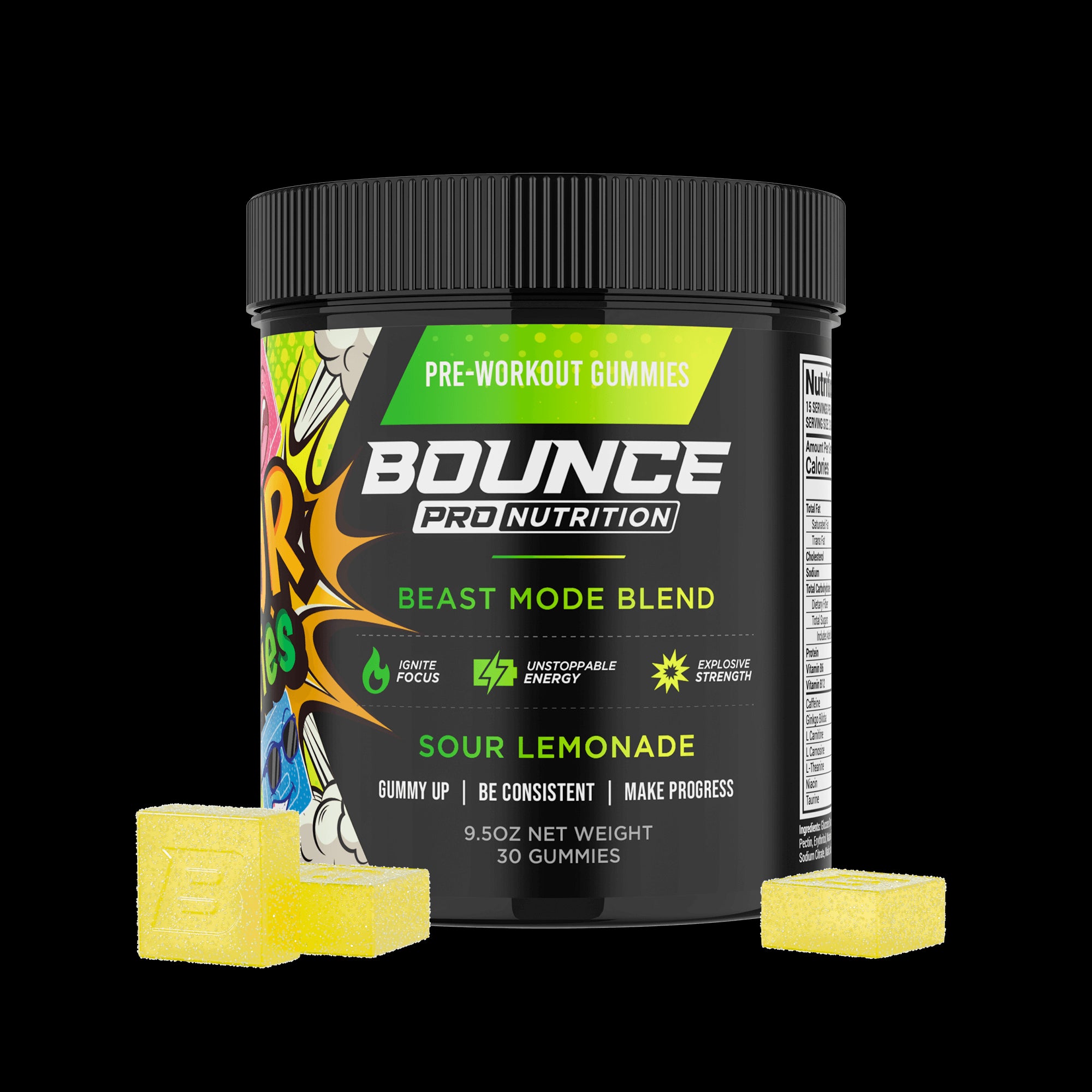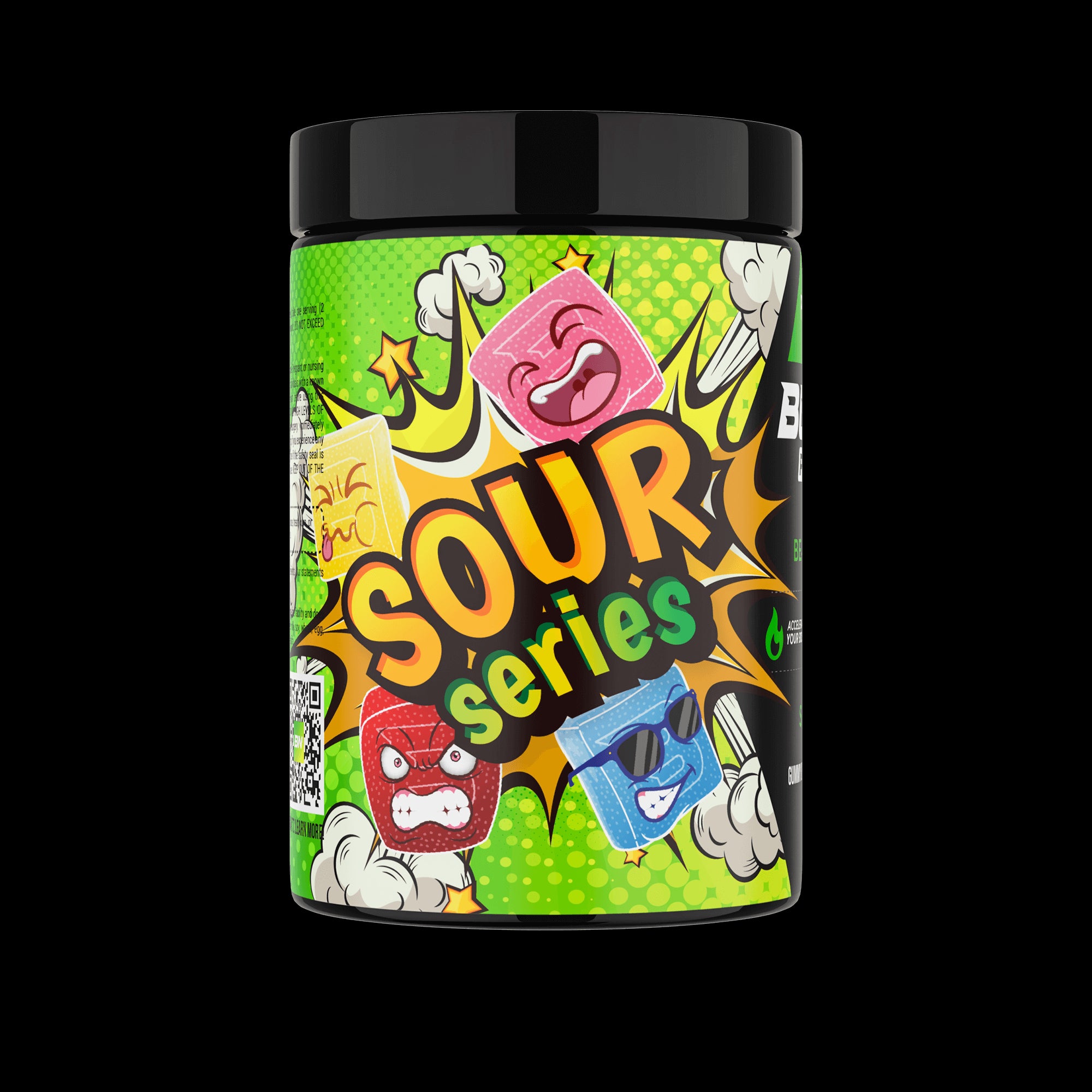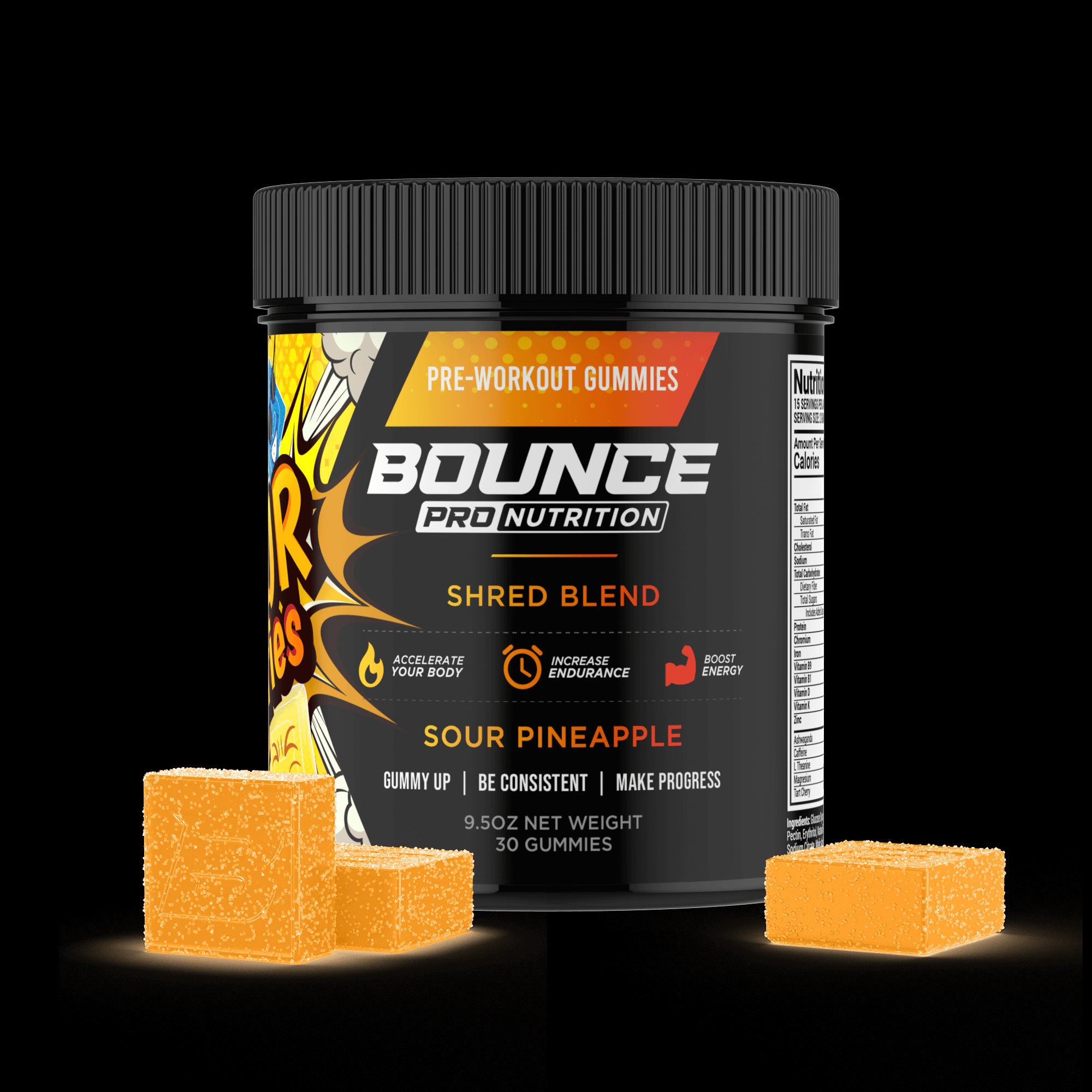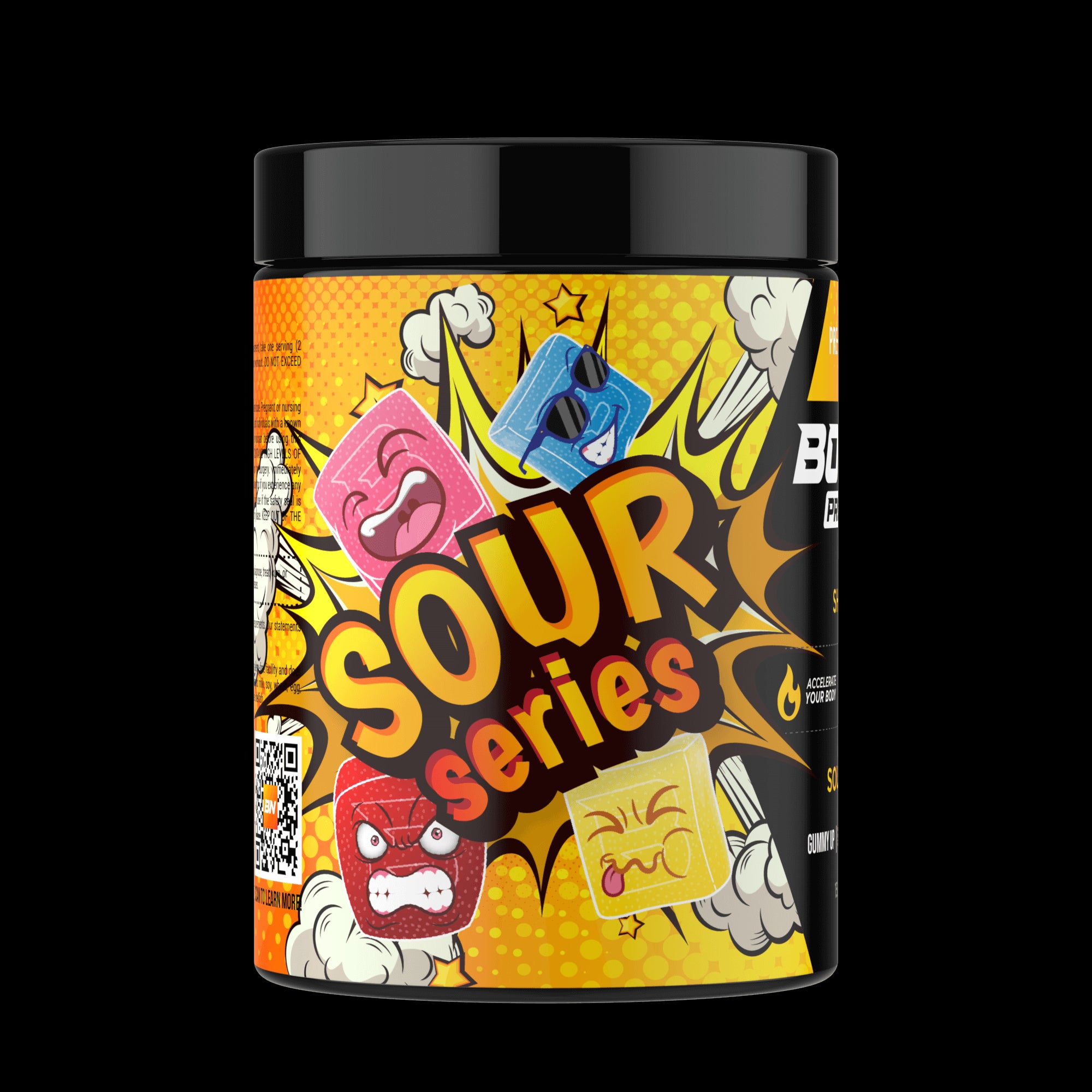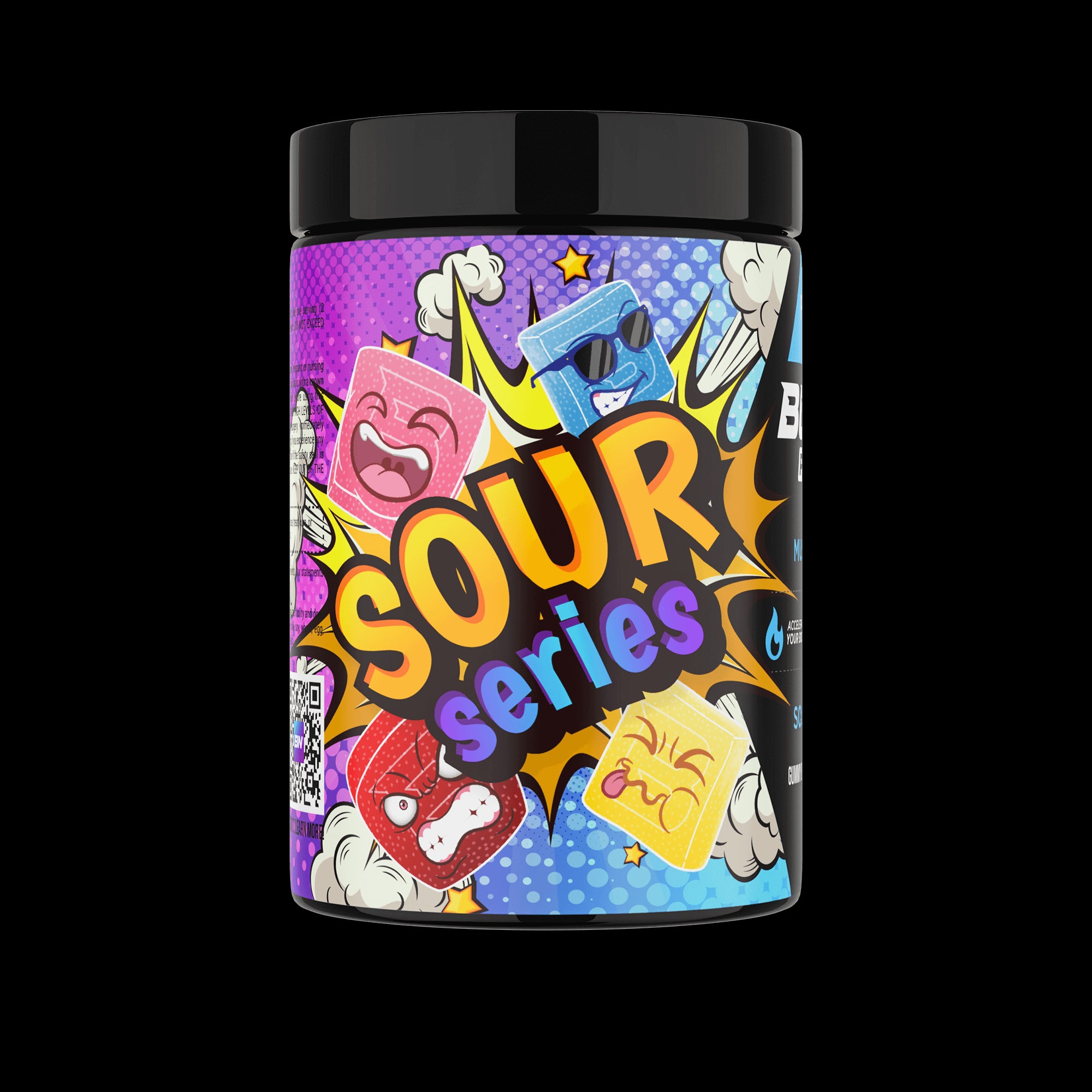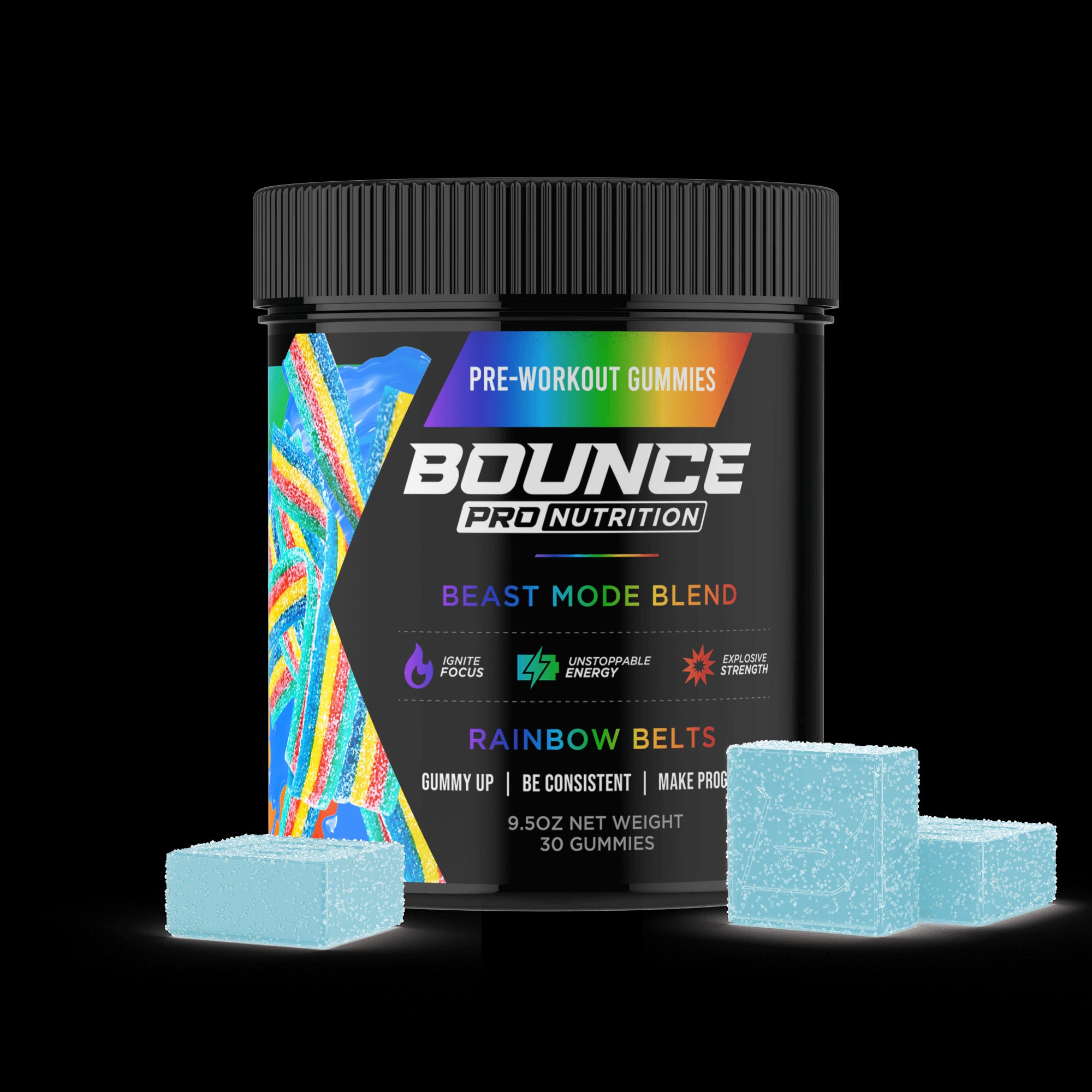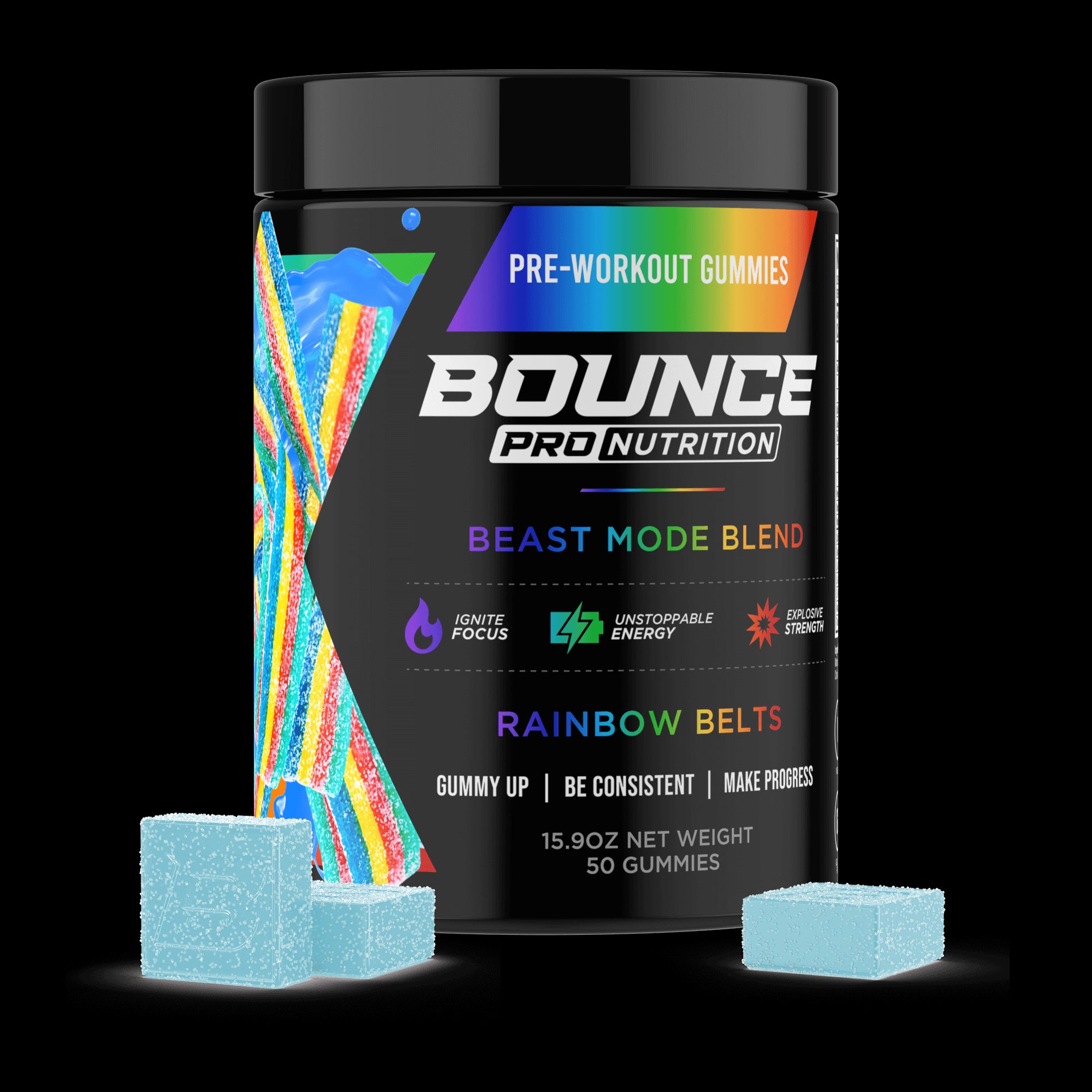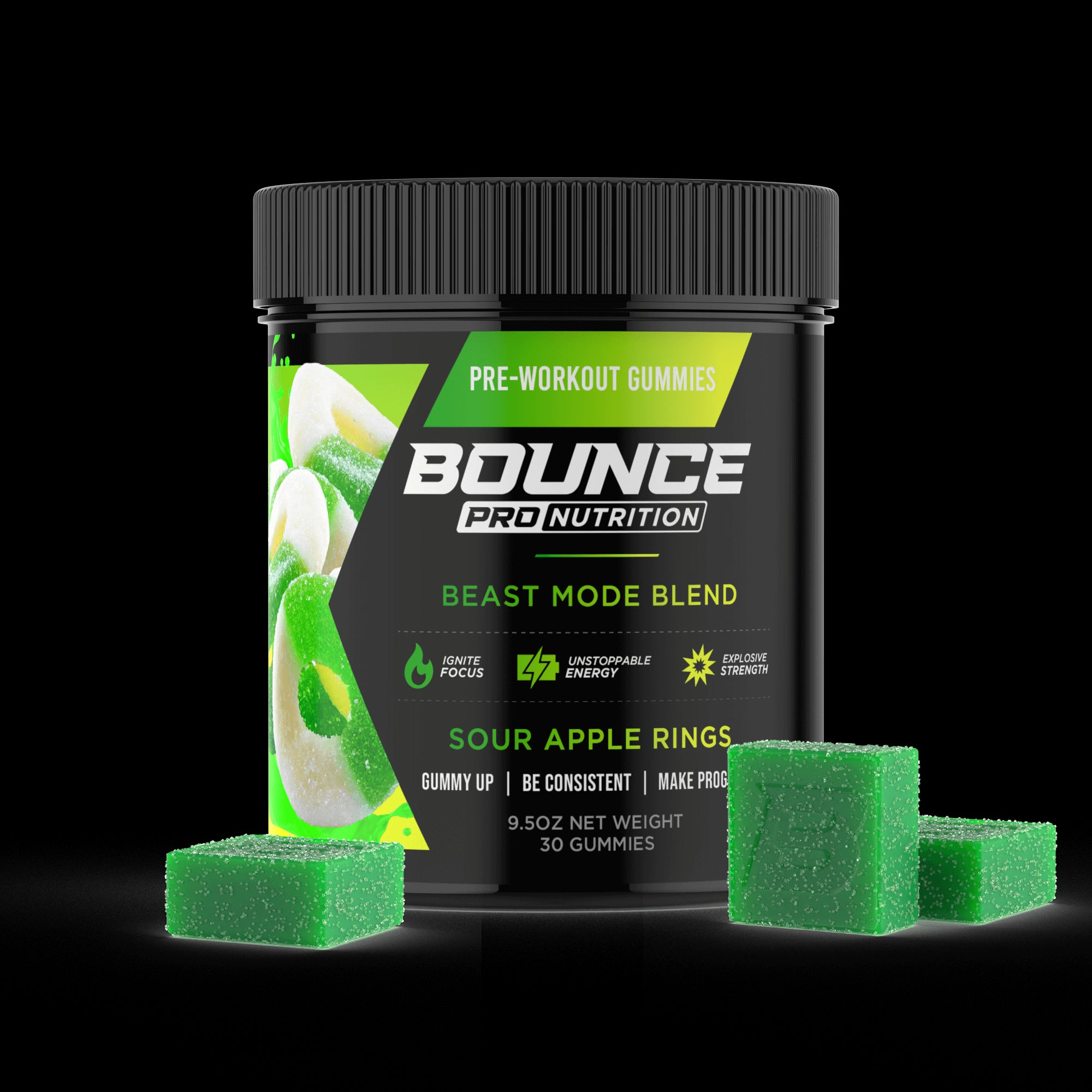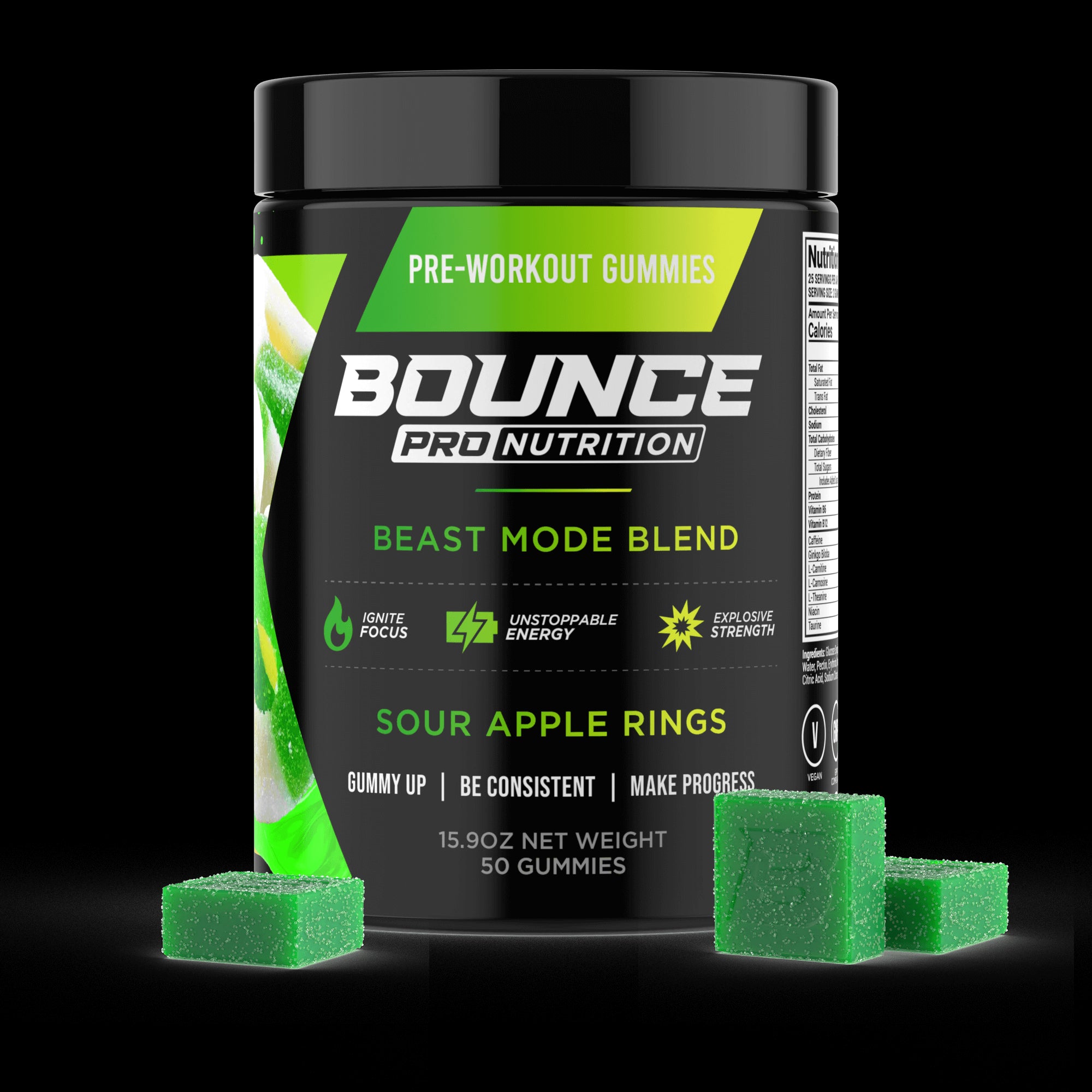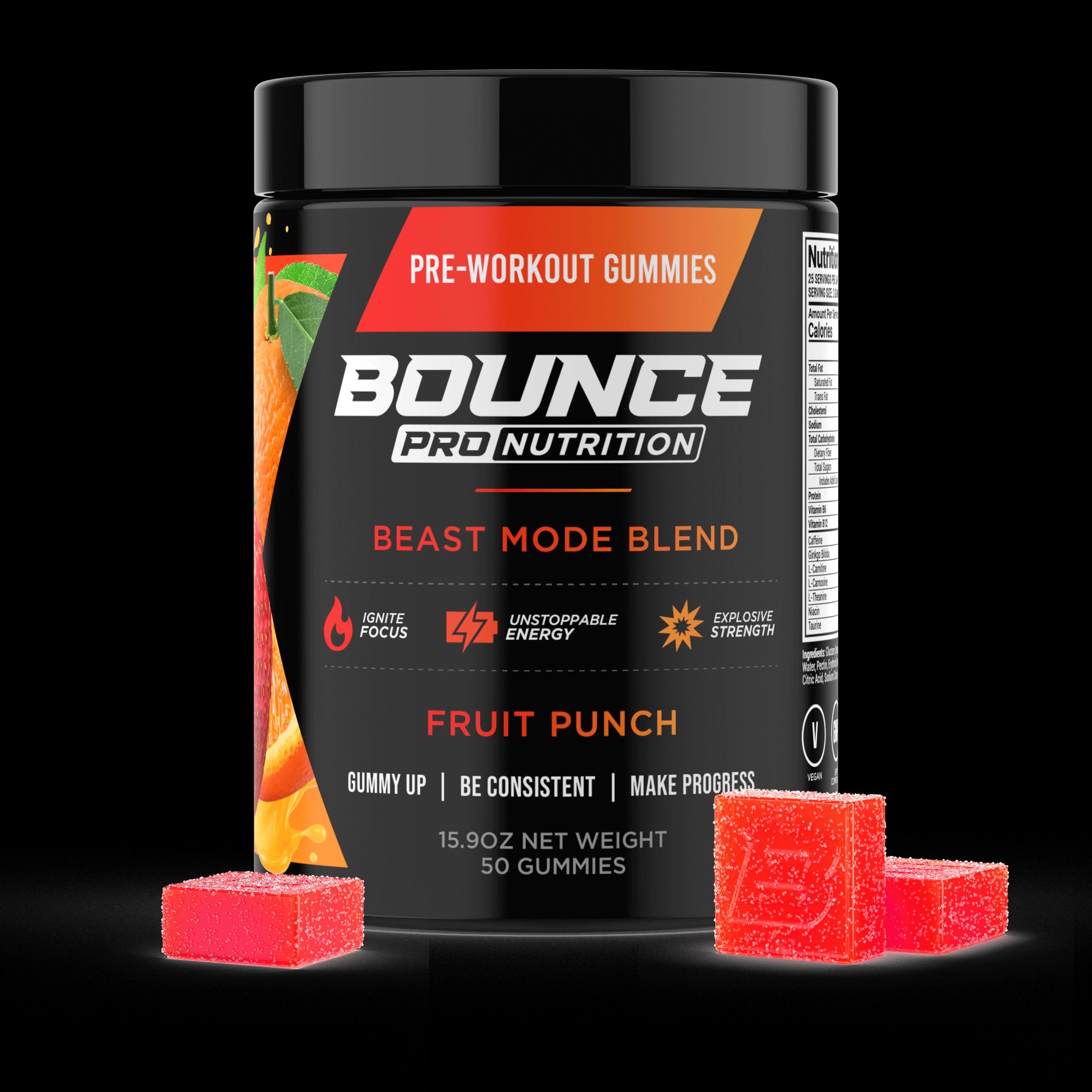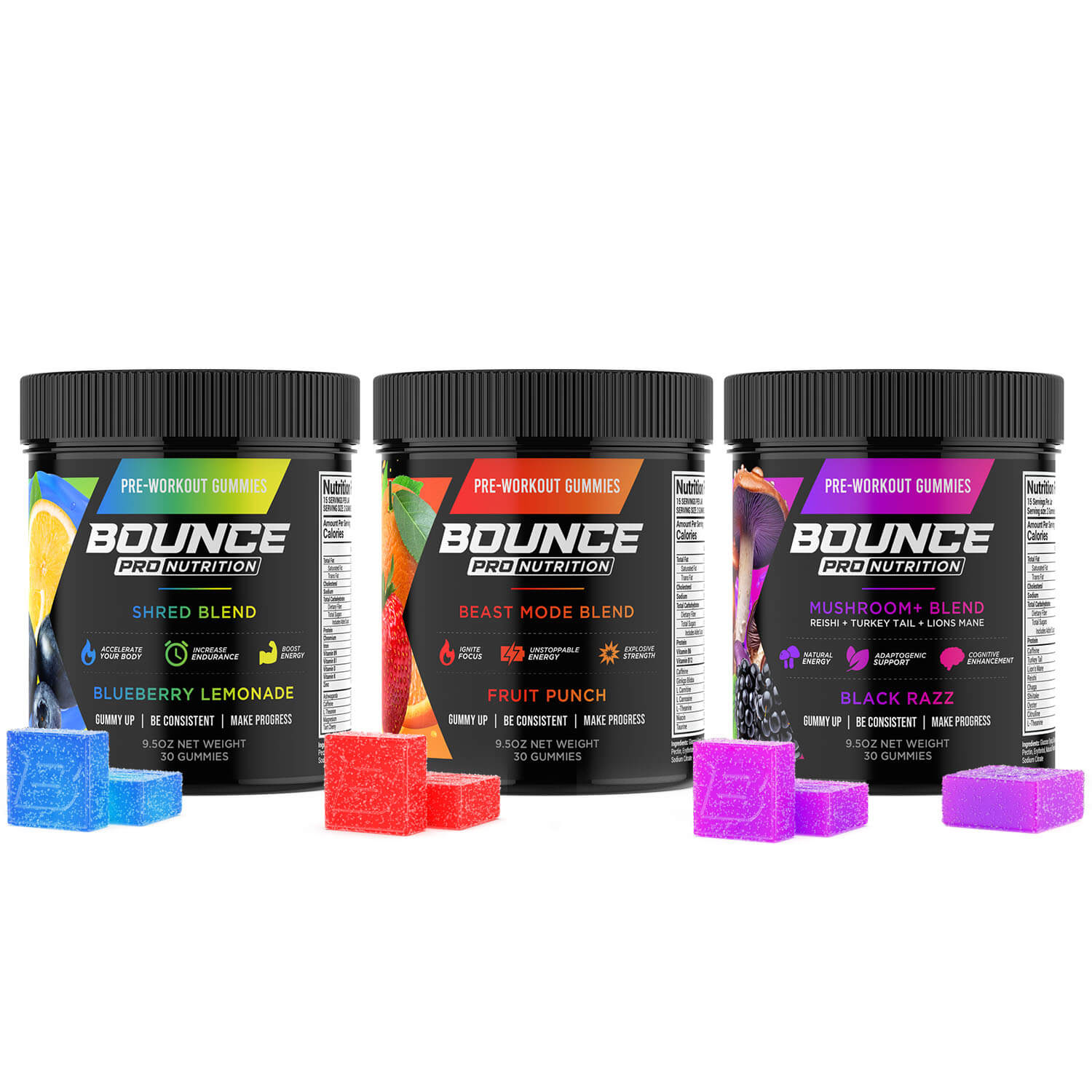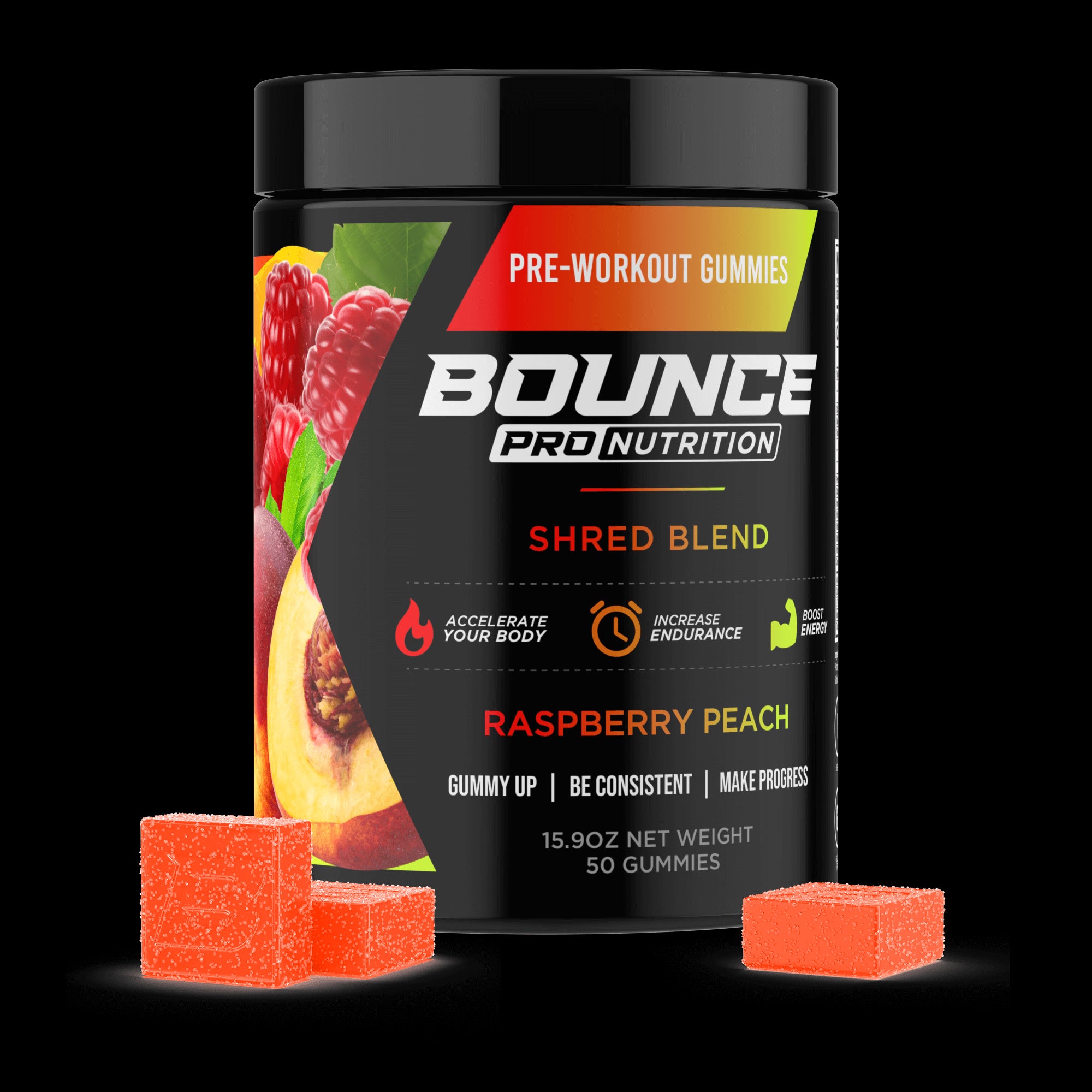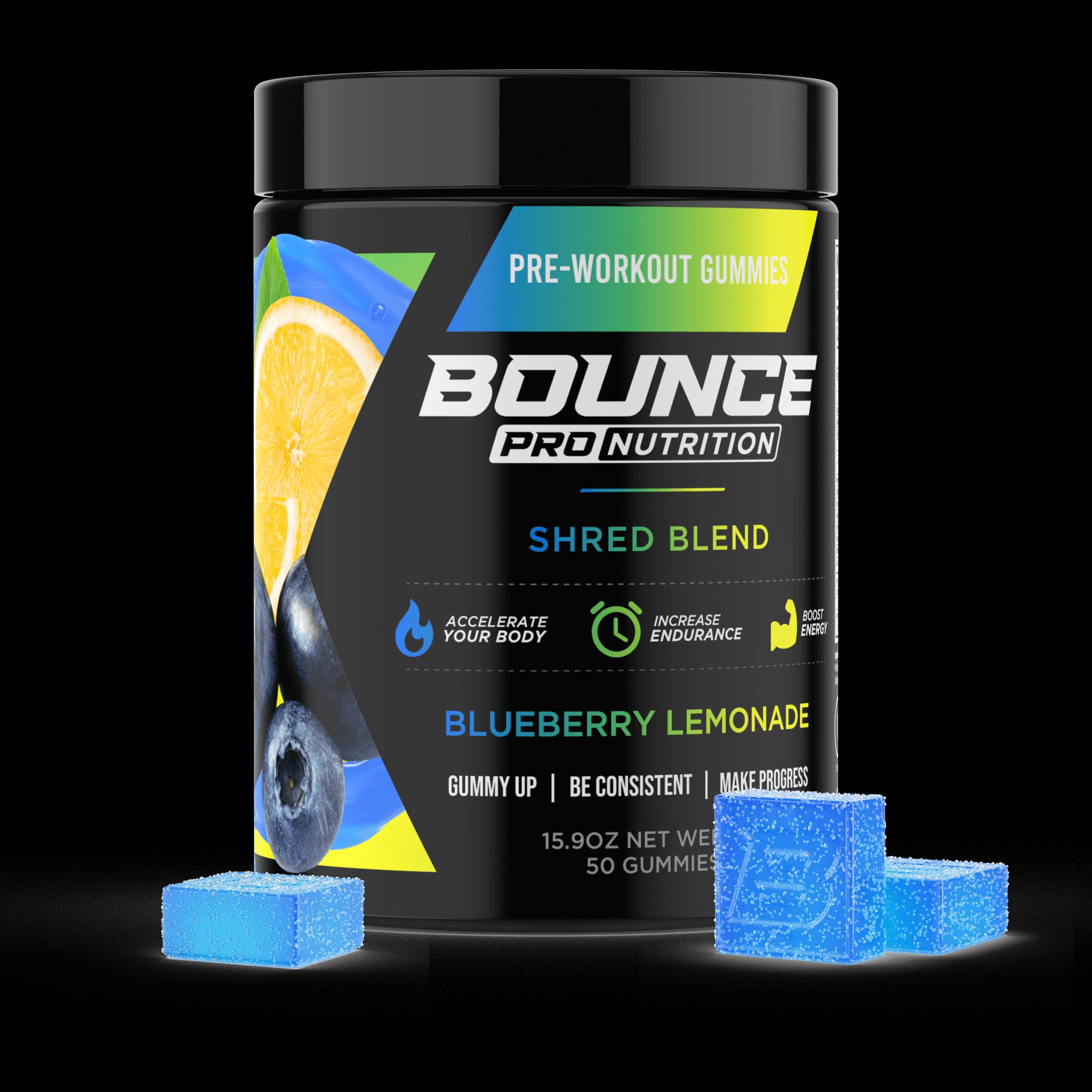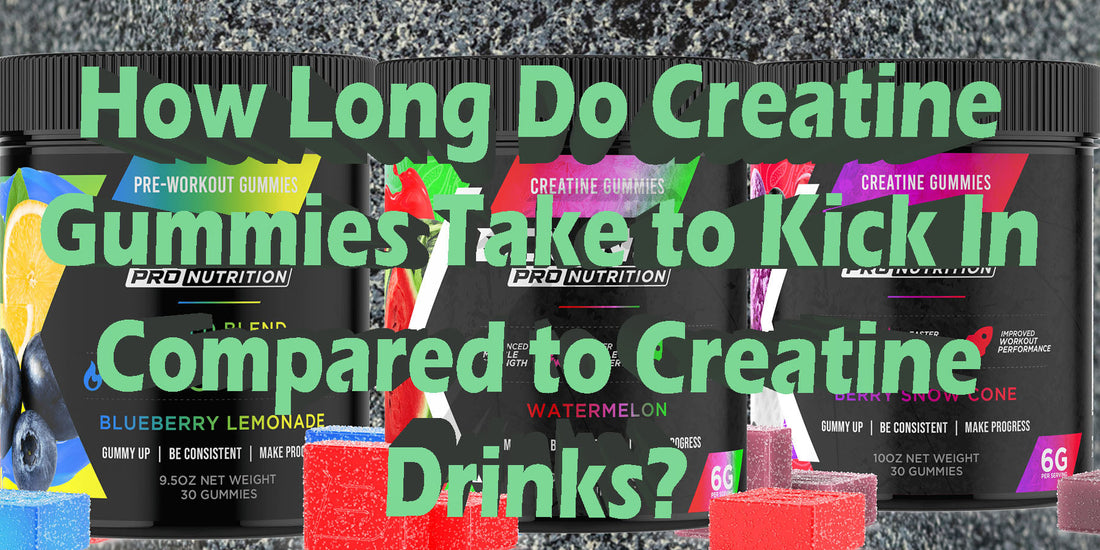In the vast and ever-innovating landscape of fitness supplements, few ingredients have stood the test of time with the same scientific backing and enduring popularity as creatine. For decades, the ritual of scooping a fine white powder into a shaker bottle has been an unwavering staple for athletes aiming to enhance their performance. But the winds of change are blowing through the supplement industry. That’s right, a new contender has stepped into the ring, offering a level of convenience and sheer enjoyability that challenges the old guard: creatine gummies.
This has ignited a fresh conversation that goes beyond simple preference, touching on the very mechanics of how our bodies use this powerful compound. You see, the central question now is about speed and efficiency—how quickly do these different forms get to work? Understanding the absorption timelines isn't just for curiosity's sake; it's about strategically timing your intake to perfectly align with your body's needs, ensuring you get the most out of every single dose. That’s one of the main reasons for comparing the chewy convenience of creatine gummies with the established rapid delivery of creatine drinks.
TO BUY CREATINE GUMMIES CLICK HERE
Getting to Know Creatine Gummies, Creatine Powder, and Creatine Drinks
Looking through the supplement aisle (be it in-person or online) to choose a creatine product can be a surprisingly complex experience given the sheer variety of options available today. What was once a straightforward choice of a single powder tub has now blossomed into a diverse market featuring tubs of micronized powders, sleek pre-made drinks, and now, travel-friendly gummies.
Each of these formats—gummies, powders, and ready-to-drink (RTD) beverages—presents a distinct method for delivering creatine to your system. While the core active ingredient, typically creatine monohydrate, remains the constant, the vehicle for that delivery is what sets them apart. This difference in form factor is about much more than just taste or convenience; it fundamentally alters the digestive process, which in turn dictates the rate at which creatine is absorbed and becomes available to your muscles.
Creatine Gummies 101
Creatine gummies mark a significant evolution in the sports nutrition world, fundamentally changing how people approach their daily creatine intake. They work by taking the scientifically recognized benefits of creatine and embedding them into a palatable, chewable format. This innovative approach does away with the need for powders, scoops, water, and shaking, presenting a simple and mess-free alternative that resonates with a modern, fast-paced lifestyle.
The allure of these gummies is twofold: they offer unparalleled simplicity and a candy-like experience that transforms supplementation from a routine task into an enjoyable moment. This leap from a functional, often flavorless powder to a convenient, solid edible represents a user-focused shift in product development, prioritizing portability and ease of use without sacrificing the supplement's primary purpose.
The story of creatine gummies is a very recent development built upon the long history of creatine itself. While creatine was discovered in the 19th Century and gained popularity as a sports supplement in the 90s, it existed almost exclusively in powder form for decades. The market was dominated by large tubs of creatine monohydrate, which offered efficacy but little in the way of convenience. As the broader supplement industry embraced "gummification" in the 2010s, turning everything from multivitamins to apple cider vinegar into chewable treats, savvy sports nutrition brands saw a clear opportunity.
They aimed to solve the common user pain points associated with creatine powder—its grittiness, the need for mixing, and its lack of portability. This led to the emergence of the first creatine gummies, a novel solution designed for a new generation of fitness enthusiasts.
The process of creating creatine gummies is a meticulous blend of food science and pharmaceutical-grade manufacturing. It’s a multi-stage operation designed to ensure that the creatine is precisely dosed, stable, and evenly mixed into a pleasant-tasting gummy. The objective is to produce a final product that is both effective from a supplementation standpoint and enjoyable to consume. So, here’s how they’re typically made:
-
Ingredient Weighing and Blending: The journey begins with the highly precise measurement of the active ingredient, most often creatine monohydrate. This is then combined with the other components that form the gummy itself: a gelling agent like gelatin or plant-based pectin, sweeteners such as corn syrup or sugar alcohols, water, and natural or artificial flavor systems. These wet and dry ingredients are carefully blended to form a uniform, homogenous mixture.
-
Cooking the Slurry: This blended mixture, now known as a "slurry," is transferred into a large, specialized cooker. It's heated under controlled temperatures to dissolve all the solid components, fully activate the gelatin or pectin, and achieve the specific viscosity required for a perfect gummy texture. This step is carefully monitored to avoid degrading the creatine.
-
Depositing into Molds: Once the slurry has reached the ideal consistency, it's moved to a depositor. This sophisticated piece of machinery precisely injects the warm liquid into vast trays of starch-lined molds, each imprinted with the final gummy shape. The food-grade starch serves a dual purpose: it prevents the creatine gummies from sticking and helps to pull moisture out, which is essential for the setting process.
-
Setting and Curing: The trays filled with the liquid gummy formula are then moved into a climate-controlled curing or "stoving" room. Here they rest for 24 to 72 hours, depending on the specific formulation. During this critical period, the gummies cool down and set, allowing the gelling agent to solidify and the product to develop its signature chewy texture.
-
Demolding and Finishing: After the curing process is complete, the creatine gummies are firm enough to be separated from the starch molds. They are typically tumbled in a large drum to remove any excess starch, which is then filtered and recycled. To prevent the finished gummies from sticking to each other in the bottle and to add a final burst of flavor, they are often lightly coated with a food-grade oil or a mixture of carnauba wax, sugar, or citric acid.
-
Quality Control and Packaging: Before they can be sent to consumers, the finished creatine gummies undergo a battery of quality control tests. These lab tests verify the potency (ensuring each gummy contains the advertised amount of creatine), check for purity, and screen for any contaminants. Once they pass these stringent checks, the gummies are packaged into airtight bottles or resealable pouches, sealed for safety and freshness, and prepared for B2B or B2C distribution.
The market for creatine gummies, while newer than that for powders, is rapidly diversifying to meet different consumer needs and preferences. The most common type is based on creatine monohydrate, the most researched and trusted form of creatine. However, as brands seek to differentiate themselves, some are beginning to offer gummies made with other forms, such as Creatine HCL, which is purported to be more soluble.
You can also find "pump" hybrid gummies that combine creatine with nitric oxide boosters like L-citrulline. Furthermore, formulations are evolving to cater to specific dietary requirements. Many brands now offer vegan creatine gummies that use fruit pectin instead of animal-based gelatin, and sugar-free options are becoming increasingly popular, utilizing sweeteners like maltitol or erythritol to appeal to low-carb and health-conscious consumers.
Now, the effects of creatine gummies are directly tied to the function of creatine itself, as they are simply a different delivery system for the same active ingredient. Creatine's primary role in the body is to help regenerate ATP (adenosine triphosphate) – the primary source of energy for short, explosive muscle contractions. By supplementing with creatine, the goal is to increase the stores of phosphocreatine in the muscles. This enhanced reserve can help individuals perform more repetitions, lift slightly heavier weights, or sustain high-intensity efforts for longer periods.
This isn't an immediate, stimulant-like effect. Rather, it's about reaching a saturation point in the muscles over time, which in turn supports improvements in strength, power output, and muscle mass when combined with consistent resistance training.
Creatine gummies are designed primarily for the fitness consumer who places the highest value on convenience, consistency, and ease of use. This includes individuals who dislike the taste or gritty texture of creatine powder or find the process of mixing shakes to be a hassle. They are perfect for the busy professional who needs to take their creatine on the go, or the traveler who can't pack a large tub of powder in their luggage.
The pre-portioned nature of gummies also appeals to those who are new to creatine supplementation, as it removes any guesswork involved in measuring the correct dosage. Plus, they serve as an excellent solution for households where multiple people are taking supplements, as they are far less messy than loose powders.
Creatine Powder 101
Creatine powder stands as the original and most time-honored form of creatine supplementation, holding its ground as the industry benchmark for decades. These powders typically consist of pure creatine, most commonly creatine monohydrate, sometimes micronized to improve solubility. The product is designed to be mixed into a liquid—water, juice, or a protein shake—to be consumed. The enduring appeal of powder lies in its unmatched cost-effectiveness and dosing flexibility.
Users can purchase large quantities at a significantly lower cost-per-serving compared to gummies or drinks, and they can easily tailor their dose, whether they are in a "loading" phase or maintaining their daily intake. This combination of economic value and precise control has cemented its status as the go-to choice for serious athletes and budget-conscious consumers.
The history of creatine powder is deeply rooted in the athletic and bodybuilding communities of the early 1990s. While creatine had been known to science for over a century, it was its reported use by British track and field athletes during the 1992 Barcelona Olympics that catapulted it into the mainstream sports world. This media exposure led to a surge in demand, and companies quickly began marketing it as a dietary supplement, almost exclusively in powder form.
Early products were often not as refined as today's, with larger particle sizes that made them difficult to dissolve. The introduction of micronized creatine powder, which involves milling the particles to make them smaller and more soluble, was a significant step forward, improving the user experience and solidifying powder as the dominant form of creatine for decades to come.
The manufacturing of creatine powder is a highly controlled industrial process focused on producing a pure, safe, and effective final product. Unlike gummies, the process is less about combining ingredients and more about refining and packaging a single one. It ensures that every scoop taken by a consumer is of high purity and quality. So, here’s how it’s typically created:
-
Chemical Synthesis: The process doesn't start with a natural source, but with chemical synthesis in a laboratory setting. The most common commercial method involves reacting two chemicals, sarcosine and cyanamide, in a reactor vessel with a catalyst. This reaction is controlled for temperature and pressure to produce creatine.
-
Purification and Crystallization: The liquid reaction mixture is then subjected to several purification steps to remove impurities and unreacted starting materials. This often involves filtration and centrifugation. The purified creatine solution is then allowed to cool, which causes the creatine to crystallize out of the solution, forming creatine monohydrate crystals.
-
Drying: The wet creatine crystals are then carefully dried to remove any remaining moisture. This is a critical step, as excess moisture can lead to degradation and clumping of the final powder. Industrial dryers are used to achieve a specific low moisture content, resulting in a stable, free-flowing powder.
-
Milling (Micronization): To improve the powder's solubility and texture, most modern creatine powders undergo a milling process known as micronization. This step uses high-speed air mills to break down the creatine particles into a much finer size, typically around 200 mesh. This increases the surface area of the powder, allowing it to dissolve more easily in liquid.
-
Final Quality Assurance Testing: Before packaging, the finished powder is rigorously tested in a lab. Multiple samples are analyzed to confirm its purity (often aiming for 99.9% or higher), to ensure it's free from contaminants like heavy metals or byproducts from the synthesis process, and to verify the correct particle size.
-
Packaging: Once the batch has passed all quality checks, the fine, white powder is transported to an automated packaging line. Here, it is precisely dispensed into high-density polyethylene (HDPE) tubs, which are then sealed to protect the product from moisture and contaminants, labeled with batch information and expiration dates, and prepared for shipment.
The world of creatine powder offers a surprising amount of variety, primarily centered on different chemical forms of creatine and processing techniques. The undisputed king is Creatine Monohydrate, which is the most extensively studied, proven effective, and generally the most affordable.
A popular variant is Micronized Creatine Monohydrate, which is the same compound milled into smaller particles for better mixability. Beyond monohydrate, other forms exist, such as Creatine Hydrochloride (HCL), which’s bonded with hydrochloric acid to enhance its solubility and is marketed with the claim that it requires a smaller dose. Other forms like Creatine Ethyl Ester (CEE), Buffered Creatine (Kre-Alkalyn), and Creatine Nitrate also compete for market share, each with its own proposed benefits regarding absorption or reduced side effects, though they lack the extensive body of research that supports monohydrate.
The effects of creatine powder are identical to those of other creatine forms, as the goal is to saturate the muscles with phosphocreatine. When consumed in liquid form, the creatine is already dissolved, allowing for efficient absorption through the walls of the small intestine into the bloodstream. Once absorbed, it's transported to the muscles. It's important to understand that creatine does not provide an immediate, perceptible "kick" like a stimulant. Its benefits are cumulative.
After several days or weeks of consistent supplementation, the increased intramuscular creatine stores can contribute to enhanced performance during short bursts of high-intensity exercise, such as weightlifting or sprinting. This can lead to improved strength gains, increased power output, and greater training volume over time.
Creatine powder is mainly for the disciplined and often experienced supplement user who prioritizes efficacy, control, and economic value. This demographic includes dedicated bodybuilders, powerlifters, and athletes who view supplementation as a critical part of their training protocol.
They are typically less concerned with the taste or convenience and more focused on the purity of the product and the ability to precisely control their dosing, whether they are doing a 5-gram maintenance dose or a more complex loading schedule. This user is also highly budget-aware, recognizing that buying creatine powder in bulk offers the best possible price per gram. They are accustomed to the routine of mixing powders and see it as a normal and necessary part of their fitness journey.
Creatine Drinks 101
Creatine drinks come in pre-packaged and sealed cans or bottles, and these beverages represent the height of convenience in the creatine supplement market. These ready-to-drink (RTD) products completely remove the user from the preparation process—there's no scooping, no powder dust, and no need for a shaker bottle. They are crafted for the ultimate "grab-and-go" consumer, making them an ideal choice for people heading straight from the office to the gym or anyone who values speed and simplicity above all else.
This format often blends creatine with other ingredients, sometimes including carbohydrates, electrolytes, or even stimulants, effectively creating a multi-purpose performance beverage. This accessibility has made creatine drinks a common sight in gym vending machines and refrigerators at health food stores.
The history of creatine drinks is a story of convergence between the sports supplement industry and the massive energy drink market. As RTD energy drinks became a cultural phenomenon in the late 1990s and 2000s, sports nutrition companies saw a logical next step. They began to wonder if the same convenient, RTD format could be used for performance ingredients beyond just caffeine.
The main technical hurdle was creatine's inherent instability in liquid over long periods; creatine monohydrate can slowly break down into its inactive waste product, creatinine, when suspended in water. However, advancements in formulation science, including the use of stabilizing agents and different forms of creatine, allowed manufacturers to create shelf-stable creatine beverages, bridging the gap between potent powders and convenient energy drinks.
The production of ready-to-drink creatine beverages is a sophisticated liquid manufacturing process that must address the unique challenge of keeping creatine stable in a liquid environment. The process is designed to deliver a safe, effective, and good-tasting product with a reasonable shelf life. So, here’s how they’re typically formulated:
-
Water Treatment and Batching: The process begins with purified water, which forms the base of the drink. In large, stainless steel compounding tanks, this water is then mixed with the other ingredients according to the specific formula. This includes the chosen form of creatine, sweeteners (like sucralose or stevia), flavorings, colorings, acidulants (like citric acid to control pH), and often preservatives to inhibit microbial growth.
-
Stabilization and Dissolving: This is a key step for creatine drinks. The pH of the liquid is carefully controlled, as creatine is most stable in a neutral or slightly alkaline environment. Sometimes, specific stabilizing agents or different, more stable forms of creatine might be used. The entire mixture is continuously agitated to ensure all ingredients are fully dissolved and evenly distributed.
-
Pasteurization: To ensure the beverage is commercially sterile and safe for consumption, it undergoes pasteurization. Most commonly, this is a High-Temperature Short-Time (HTST) process where the liquid is heated very quickly to a high temperature for a few seconds and then rapidly cooled. This kills any potential pathogens while having minimal impact on the flavor and integrity of the ingredients.
-
Carbonation (Optional): If the final product is a carbonated beverage, the cooled, pasteurized liquid is then transferred to a carbonator. In this pressurized vessel, carbon dioxide (CO2) is injected into the drink, where it dissolves to create fizziness.
-
Filling and Sealing: The finished liquid, whether still or carbonated, is piped to a high-speed, automated filling line. Cans or bottles are sterilized, filled with the precise volume of the creatine drink, and then immediately sealed or capped to maintain freshness, and in the case of carbonated drinks, to maintain pressure.
-
Labeling and Final Packaging: The sealed containers move down the line to be labeled and coded with batch numbers and expiration dates. They are then packed into trays or cases, palletized, and stored before being shipped to distributors and retailers for sale to the public.
The variety of creatine drinks on the market continues to grow as brands aim to capture different segments of the fitness and wellness market. Many RTD creatine drinks are formulated as comprehensive pre-workout or post-workout solutions. For instance, you can find drinks that combine 3-5 grams of creatine with a fast-digesting carbohydrate source like dextrose, which is intended to spike insulin and potentially enhance creatine uptake by the muscles.
Others are combined with BCAAs (Branched-Chain Amino Acids) and electrolytes to support hydration and recovery. There are also stimulant-based versions that include caffeine, positioning them as an all-in-one energy and strength support drink. Flavor is a major area of innovation, with a vast array of options designed to compete with mainstream soft drinks and energy drinks.
The effects of creatine drinks are influenced by their liquid state and their often multi-ingredient formulas. As a pre-dissolved solution, the creatine is ready for immediate absorption by the body, much like a mixed powder. This allows it to be absorbed efficiently through the small intestine.
When the drink also contains carbohydrates, it can trigger an insulin response. Insulin is a hormone that helps transport nutrients into cells, and some research suggests that this response may facilitate the transport of creatine into muscle cells, potentially enhancing the saturation process. Therefore, the overall effect is one of rapid delivery and convenience, often combined with additional benefits from other included ingredients like hydration from electrolytes or energy from carbs and stimulants.
Creatine drinks are primarily for the consumer who prioritizes absolute convenience and speed. This user might be a busy professional who needs a no-fuss option to drink on the way to the gym, or a student who wants a simple, all-in-one drink for their workout. It's also an excellent entry point for individuals who are new to creatine and find the idea of mixing powders to be cumbersome or intimidating.
The single-serving format provides a low-commitment way to try a creatine supplement. This category also appeals to those who are already regular consumers of energy drinks but are looking for a version that is more specifically tailored to support their athletic and muscle-building goals.
What Does the Term “Bioavailability” Mean in the Workout Space?
In the workout space, the term "bioavailability" refers to the percentage of an ingested substance—like creatine, caffeine, or a vitamin—that successfully enters the bloodstream and becomes available to have an active effect on the body. Think of it as a measure of absorption efficiency. When you consume any supplement, it must survive the journey through the acidic environment of your stomach and then be absorbed through the intestinal lining to enter your circulation.
Only then can it be transported to the target tissues, such as your muscles. The bioavailability of a compound determines how much of the dose you took actually makes it to this final stage.
Not every milligram of a supplement you swallow is guaranteed to be used. Some of it might not be absorbed and will simply pass through your system, while some might be broken down or altered by your liver before it ever reaches the rest of your body—a process known as the "first-pass effect". Therefore, a supplement with high bioavailability is more effective on a milligram-for-milligram basis than one with low bioavailability.
This concept is crucial for understanding why different forms of a supplement (like creatine monohydrate vs. creatine HCL) or different delivery methods (like a liquid vs. a solid gummy) can produce varied results, as these factors can significantly influence how efficiently a compound is absorbed.
How Quickly Do Creatine Gummies Start Working?
The question of how fast do creatine gummies kick in requires a nuanced understanding of how creatine functions in the body. Unlike a stimulant like caffeine, creatine does not have an immediate, acute effect that you can "feel" within minutes. Its benefits are cumulative, stemming from the gradual saturation of creatine stores within your muscles.
Therefore, the "kick in" time isn't about an instant energy rush, but about the time it takes for the creatine in the gummy to be digested, absorbed into the bloodstream, and made available for transport to the muscle cells. This process for a gummy is inherently slower than for a liquid. The gummy is a solid food that needs to be broken down by your digestive system first to liberate the creatine molecules.
The digestive journey for a creatine gummy begins with chewing, which starts the mechanical breakdown. From there, it moves to the stomach, where acids further dissolve the gummy matrix. The creatine is then released and primarily absorbed in the small intestine. Generally, you can expect the creatine from a gummy to be digested and absorbed into the bloodstream within approximately 45 to 60 minutes.
This timeframe is influenced by individual factors, most notably your metabolism and what else is in your stomach. Taking gummies on an empty stomach can lead to quicker absorption, whereas taking them after a large meal can significantly delay the process.
It is crucial to differentiate this absorption time from the time it takes to experience creatine's performance-enhancing benefits. Feeling the actual effects of creatine—such as being able to perform an extra rep or two—only happens once your intramuscular creatine stores are fully saturated.
This saturation process typically takes anywhere from 7 to 28 days, depending on whether you perform an initial "loading phase" (taking a higher dose for the first week) or simply stick to a standard daily maintenance dose. So, while a creatine gummy might take about an hour to be absorbed on any given day, the tangible workout benefits you're seeking are the result of consistent daily intake over a period of one to four weeks.
Comparing That Delivery Speed of Creatine Gummies to Creatine Powder and Creatine Drinks
Comparing the delivery speed of creatine gummies to powders and drinks is essential for anyone looking to fine-tune their supplement strategy. The rate at which creatine enters your bloodstream can be influenced by its delivery format, which in turn can inform your timing and stacking choices. Understanding these nuances allows you to move beyond simply taking creatine to strategically planning its intake to best support your body's processes and training goals. Hence, why a clear view of these absorption rates is key to personalizing your approach for maximum benefit.
When you compare the absorption speed of creatine gummies to creatine powder mixed with a liquid, the most significant difference is the physical state of the supplement when consumed. A serving of creatine powder dissolved in water or juice is already a liquid solution. This means the creatine molecules are freely suspended and immediately available for absorption once they reach the small intestine. The body doesn't need to perform any significant digestive work to break down a delivery matrix. This direct route facilitates a relatively fast absorption process, with the creatine typically entering the bloodstream within about 30 to 45 minutes. This makes it a faster-acting option for getting creatine into your system after consumption.
Creatine gummies, as solid food items, require an additional digestive step. Your body must first break down the gelatin or pectin structure of the gummy to release the creatine molecules. This "digestive lag" is the primary reason why the answer to how fast do creatine gummies kick in—in terms of bloodstream absorption—is a longer window of 45 to 60 minutes. The process is more akin to how your body digests food, resulting in a slower, more metered release of the active ingredient into your system. This isn't necessarily a disadvantage; it's simply a different absorption profile that results in a more gradual entry of creatine into the bloodstream compared to the more rapid influx from a liquid.
The comparison to ready-to-drink (RTD) creatine beverages aligns closely with that of powders. These pre-packaged drinks offer the same core advantage: the creatine is already fully dissolved in a liquid medium. This makes them one of the fastest delivery systems available, with an absorption timeframe similar to powders, around 30 to 45 minutes. Often, these drinks also contain simple carbohydrates. This is a strategic inclusion, as the carbs can stimulate an insulin response from the body. Insulin helps shuttle nutrients, including creatine, into muscle cells, which may theoretically enhance the overall uptake and saturation process, making the delivery not just fast but potentially more efficient as well.
Essentially, the spectrum of delivery speed places RTD drinks and mixed powders on the faster-acting end of the scale, while creatine gummies are decidedly slower-acting. The choice between them depends entirely on user preference and goals. If you're consuming creatine post-workout alongside a carbohydrate-rich shake to maximize potential uptake via an insulin spike, a fast-acting powder or drink makes logical sense. If you're taking your creatine at a different time of day or simply prefer a more convenient, enjoyable, and gradual method, the slower release from a gummy is a perfectly effective and practical choice.
What are Some Ways That Users Can Optimize Their Timing in Order to Grasp the Concept of Fast-Acting versus Slow-Acting Delivery?
Grasping the practical difference between a fast-acting creatine drink and a slower-acting creatine gummy is the final step in mastering your supplementation strategy. True optimization comes from learning your body's unique responses and aligning your product choice and timing with your daily routine and fitness goals.
It's less about a universal "best time" and more about finding the most consistent and effective time for you. By paying close attention and experimenting thoughtfully, you can turn your daily creatine dose into a precision tool. Below are several ways to help you understand and leverage the concepts of fast-acting versus slow-acting delivery:
-
Prioritize Consistency Over Acute Timing. This is the single most important rule for creatine. The primary goal is muscle saturation, which is achieved by consistent daily intake, not by pinpoint timing around your workout. Whether you choose fast-acting powder or slow-acting creatine gummies, the most critical factor for seeing results is taking your required dose every single day, including on rest days. Once you’ve established this habit, you can then fine-tune the timing.
-
Use Delivery Speed to Your Logistical Advantage. Think about your daily schedule. If the only time you remember to take your supplements is right after your workout with your protein shake, a fast-acting powder that can be mixed in is perfect. If you're someone who is always on the run in the morning and wants a no-fuss option to take with your breakfast or as you head out the door, the "slower" absorption of a convenient gummy is an ideal fit. Match the product's speed and convenience to the moment in your day when you are most likely to be consistent.
-
Experiment with Post-Workout Timing. To feel the difference, try this experiment. For two weeks, take a fast-acting creatine powder mixed with a liquid containing some carbohydrates (like grape juice) immediately after your workout. The theory is that your muscles are more receptive to nutrient uptake post-exercise, and the insulin spike from the carbs may help transport the creatine. For the next two weeks, take creatine gummies an hour before your workout. While the long-term results will be the same, this allows you to see if one method feels more convenient or fits your routine better.
-
Leverage Gummies for "Dose Stacking" Convenience. If you're a supplement user who takes multiple products, creatine gummies can simplify the process. Instead of mixing several different powders, you can take a creatine gummy alongside a multivitamin gummy or other supplement. The slower digestive timeline isn't a drawback here; it's simply part of a convenient, non-liquid "stack" that you can take at any time of day that you choose, such as with a meal, to potentially enhance absorption.
-
Use Liquids When Stacking with Other Powders. Conversely, if your supplement regimen already involves a powdered pre-workout or a post-workout protein shake, a fast-acting creatine powder is the most logical choice. It can be added directly to the shake you're already making, which is highly efficient. This method takes advantage of the liquid format for rapid delivery of multiple ingredients at once, which is a cornerstone of many athletes' nutritional strategies.
-
Understand the "Empty vs. Fed Stomach" Effect. To truly grasp the concept of "digestive lag", experience it firsthand. On a rest day, try taking your creatine gummies first thing in the morning on an empty stomach. On another rest day, take them immediately after a large lunch. While you won't "feel" the creatine kicking in, this exercise will give you a practical sense of how a solid food-based supplement interacts with your digestive system, reinforcing why a gummy's absorption is inherently slower and more gradual than a simple liquid.
-
Stop Worrying About the "Anabolic Window." For years, athletes were obsessed with consuming nutrients within a 30-60 minute "anabolic window" post-workout. Modern research has shown this window is much larger than previously thought, likely several hours long. This means you don't have to stress about slamming a creatine shake the second you finish your last set. Whether you choose a fast-acting liquid right after or a slow-acting gummy an hour later, as long as you are consistent daily, you will achieve full muscle saturation and reap the benefits.
Why Choose Bounce Nutrition Creatine Gummies?
Bounce Nutrition Creatine Gummies provide incredible potency, effectiveness, and overall strength, making them the ultimate choice for anyone seeking serious performance gains. These gummies deliver an impressive 6 grams of creatine monohydrate per serving (containing 2 grams of creatine per gummy). This is the lowest serving size creatine gummy on the market. You only need 3 gummies instead of 5 or even 6 to get the full dose. As well, 3 gummies is 6g of creatine. Not to mention, the quality of our creatine and the superior formulation is designed to maximize absorption and efficiency. Can’t forget either, that these gummies aren’t only strong but also delicious:
-
Our traditional Creatine Gummies are available in Berry Snow Cone, Cherry Lime, Peach Rings, and Watermelon.
-
Our Creatine Sour Series flavors consist of Blue Razz and Strawberry Kiwi.
Additionally, Bounce Nutrition Creatine Gummies are lab tested and shown right on our website for proof you’re getting what you’re buying.
Now You Know How Fast Creatine Gummies Kick In
Ultimately, the conversation about creatine timing isn't a race; it's a testament to personal choice and the beauty of innovation in the fitness world. The journey of a creatine molecule from a gummy to your muscle may take a slightly more scenic route than one from a drink, but the destination remains the same: full saturation and enhanced performance potential.
By embracing this knowledge, you are freed from the outdated pressures of split-second timing. You can confidently choose the format that seamlessly integrates into your life, whether it's the rapid ritual of a post-workout shake, or the simple, chewable convenience of a gummy taken with your morning vitamins. This understanding transforms your supplement strategy from a rigid set of rules into a flexible and personalized tool for achieving your long-term goals.


